Delving into the heart of Paris is akin to embarking on an intimate journey through time and elegance. As someone who has not only dwelt in the embrace of this city but has also treaded its paths and unravelled its mysteries, I extend a warm, personal invitation to you to uncover the ’25 Most Important Landmarks of Paris’ through my eyes. With its rich tapestry of history, culture, and art, this city has been more than a mere backdrop to my life; it has been a constant companion, whispering stories of the past through the stones of its landmarks.
In this article, I won’t merely list landmarks; we will immerse ourselves in the essence of what makes each site a pivotal piece of the Parisian mosaic. These landmarks are not just structures; they are the beating heart of Paris, each with its own pulse and story. Each landmark is a chapter from a grand narrative, from the iconic silhouette of the Eiffel Tower against the city sky to the serene, hallowed halls of Notre Dame.
So, let us set forth on this journey together. I will share a fragment of my experiences, personal anecdotes, or whispered secrets with each landmark, blending the majestic with the intimate. Join me as we explore the ’25 Most Important Landmarks of Paris’ and prepare to see this city of lights and shadows through the lens of someone who has loved, lived, and breathed Paris in all its timeless splendour.
What the landmarks of Paris owed to the 19th century
Haussmann’s great works of the mid-19th century considerably modified the city’s landscape. They allowed a large number of landmarks to be highlighted.
How to highlight the landmarks of Paris
Highlight the Parisian landmarks was one of Napoleon III’s favourite themes, as Haussmann recalled:
“To give [Parisians] a satisfaction to their artistic instincts, by beautiful perspectives; by the freeing of old monuments and the isolation of new ones.”
Creating new axes in the Parisian urban network aimed to connect dispersed or isolated neighbourhoods. In doing so, these new avenues or boulevards pierced the city from one particular point to another:
- a monument (Notre Dame),
- a facility (a train station or barracks such as Gare de l’Est),
- an urban gateway (Porte d’Orléans, Porte de Clichy),
- a square (Place de la République) an important crossroads, or
- a bridge (Pont au change).
At that time, urban planning rules obeyed those inherited from the classical age. The aim was to create straight roads, clear existing monuments, or build new ones.
The need for a focal point
The long, straight lines of the streets magnify the perspectives. However, with no monument, they dilute without any focal point.
Thus, the Avenue de l’Opéra was created to highlight the most important building built under the Second Empire in Paris.
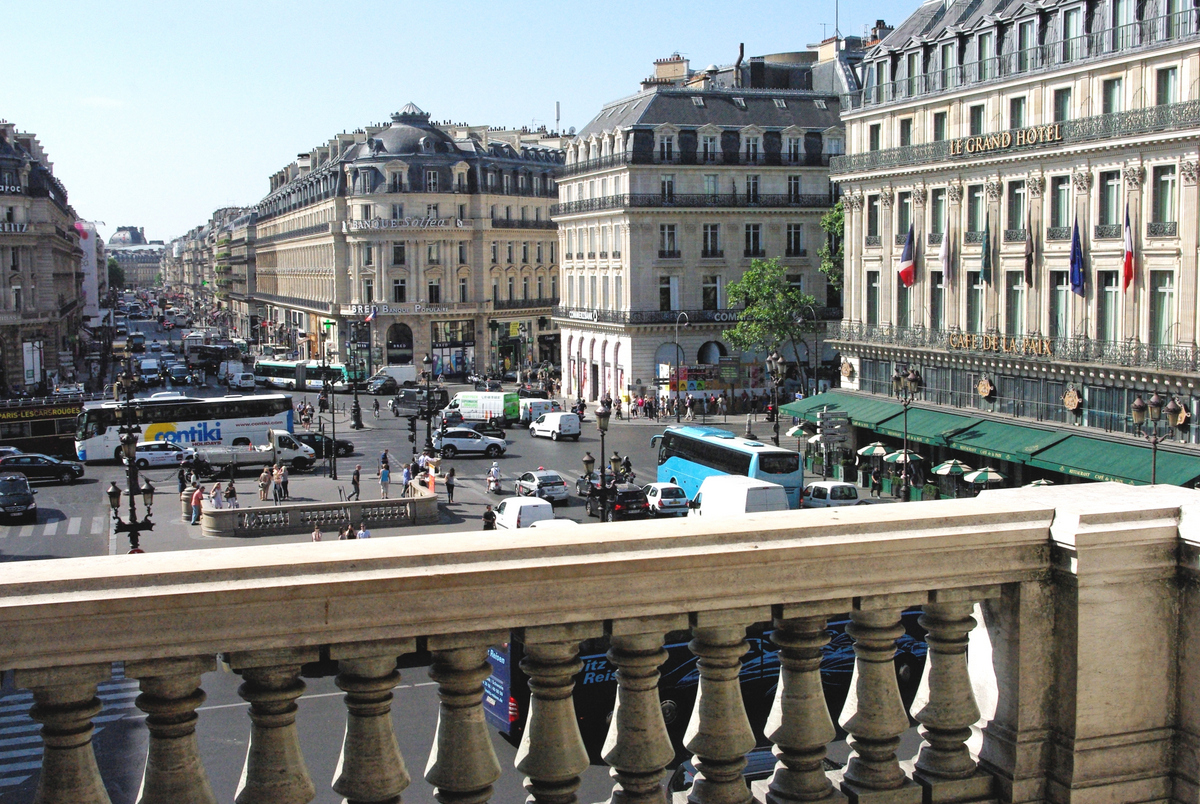
Other street openings created long perspectives ending in stations: Boulevard de Strasbourg (Gare de l’Est) and Rue de Rennes (Gare Montparnasse and today, Montparnasse Tower). As for the Avenue des Gobelins, it looks at the Pantheon from the Place d’Italie.

What is a landmark?
According to the Collins dictionary, a landmark is a building or feature which is easily noticed and can be used to judge your position or the position of other buildings or features.
Considering this definition, a landmark can be a distinctive sign as :
- a monument (the Arc de Triomphe),
- a church (Notre-Dame de Paris),
- a public building (City Hall of Paris)
- a square (Place de la République),
- a bridge (Pont Neuf),
- an urban park (Jardin du Luxembourg),
- or even a métro station (Saint-Michel) or a railway station (Gare Saint-Lazare).
And so, you can imagine there are dozens, if not hundreds, of landmarks in Paris!
In this article, I will give you the names of the most famous landmarks of the French capital and a list by arrondissement.
What are the 25 most famous landmarks of Paris?
Here’s a list of the 25 most famous landmarks of Paris, starting with a very obvious one! 😉
Let me know in the comments if I’ve missed one, as determining what qualifies as a landmark can get rather personal!
The Eiffel Tower
7th arrondissement
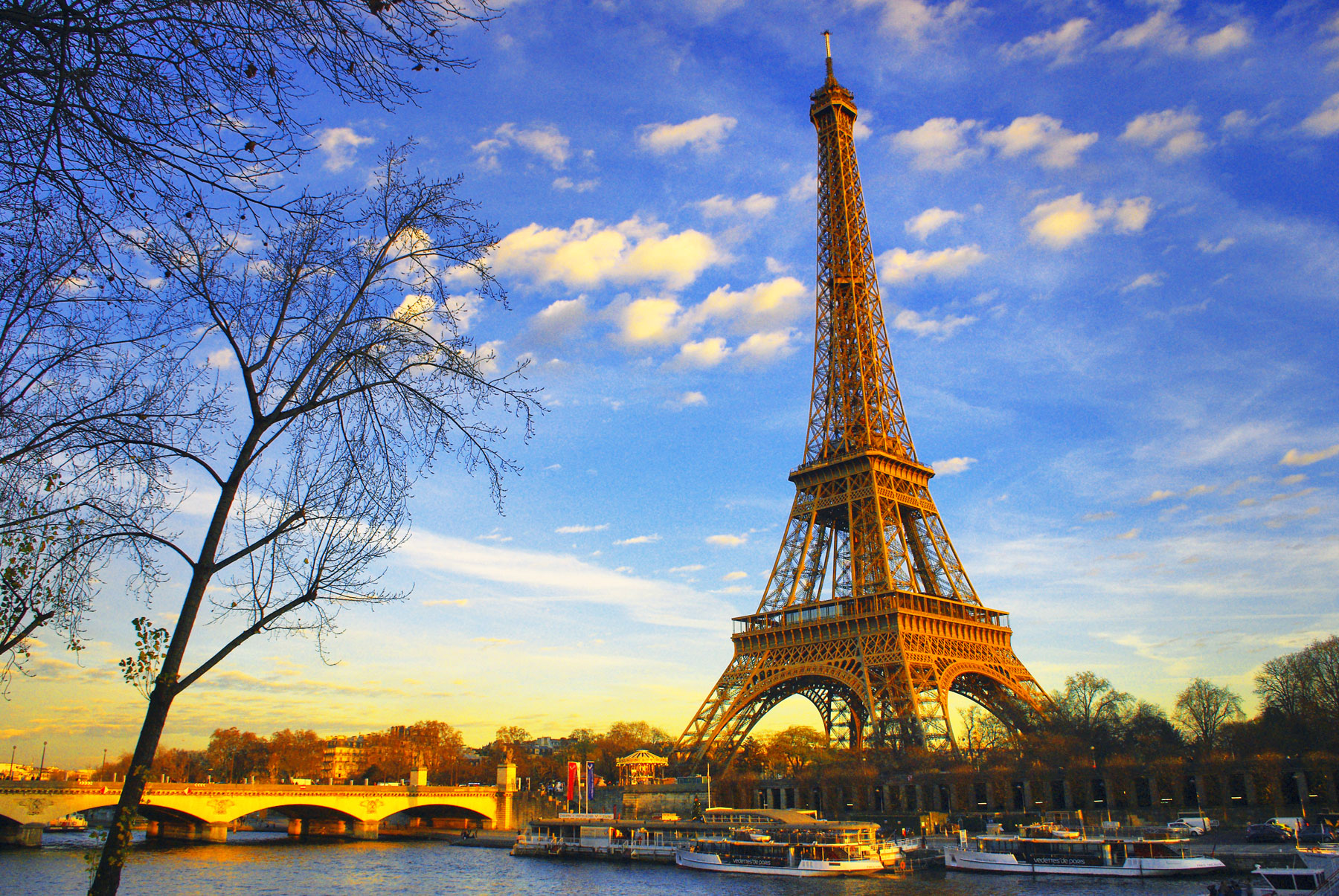
If you ask anyone worldwide the name of the most famous landmark in Paris, they will answer: the Eiffel Tower!
Indeed, the Iron Lady symbolises Paris and France.
At 325 meters high, it is still the highest monument in Paris and can be seen from many places in the city. It is, therefore, an ideal landmark and serves as a beacon for many Parisians and tourists.
At night, the top of the tower houses a beam of light like a lighthouse, illuminating the Parisian sky.
But the main drawback of this landmark par excellence is its location. In fact, the Eiffel Tower is not located in the heart of Paris, as it is slightly off-centre to the southwest.
The landmark in the heart of Paris is a monument and a church: Notre-Dame de Paris.
- Find out more about the Eiffel Tower on the blog
- Enroll in our online discovery course: The Secrets of the Eiffel Tower.
- Get your online tickets to the summit of the Eiffel Tower with Tiqets!
Notre-Dame de Paris
4th arrondissement

In the past, Notre-Dame de Paris and its 100-metre-high spire were among the most famous landmarks of Paris and the easiest to observe, especially from the banks of the Seine.
However, during the terrible April 15, 2019 fire, Notre Dame lost its spire but fortunately kept its two front towers.
The good news is that in 2024, the Paris cathedral will regain its spire and its roof following major restoration work.
The Paris Cathedral of Notre Dame is a jewel of Gothic architecture and arguably one of the finest churches in Europe. Constructed in the Middle Ages, the cathedral is the centre stage of “The Hunchback of Notre-Dame”, a 19th-century novel by French writer Victor Hugo.
When the restoration work is completed, it will once again be possible to climb the 380 steps of the south tower to admire the mysterious gargoyles and chimeras of the cathedral, not to mention the sublime view of all of Paris.
⚠️ Due to the fire on April 15, 2019, visiting the interior and towers of Notre Dame during the restoration work is impossible.
Arc de Triomphe
8th, 16th and 17th arrondissements

The Arc de Triomphe is a triumphal arch at the top of the prestigious Avenue des Champs-Élysées.
It was raised at the centre of Place de l’Étoile (or Place du Général Charles de Gaulle) from where 12 avenues radiate. In fact, the Arc de Triomphe was built in honour of Napoleon‘s French Imperial army.
I love to view it from the Place de la Concorde or the Esplanade de la Défense. Yes, you can’t miss it along the Historical Axis!
- Find out more about the Arc de Triomphe on the blog
- Read our guide to the Historical Axis of Paris, which runs from the Louvre to La Défense via the Arc de Triomphe
- Get your entrance tickets to the Arc de Triomphe and its museum with Tiqets!
The Louvre
1st arrondissement

It is said that the Louvre is the world’s largest museum. Whether true or not, it ranks as one of Europe’s most majestic palaces.
Originally, this was the former residence of the Kings of France. Today, the Louvre Museum displays over 38,000 pieces of art. On my visits, I never miss visiting the remains of the medieval foundations on the lower ground floor.
Some of the most famous are Mona Lisa, the Venus de Milo, and Delacroix’s painting Liberty Leading the People…
Finally, the Louvre and its glass pyramid open onto the Tuileries Gardens at the starting point of the Historical Axis.
- Find out more about the Louvre on the blog
- Get your entrance tickets to the Louvre Museum with Tiqets!
Pompidou Centre
4th arrondissement

The Pompidou Centre in the district of Beaubourg is one of France’s most visited museums.
Near the busy shopping precinct of Les Halles, the Pompidou Centre was designed in high-tech architecture. With its colour-coded pipes and ducts, the design of the modern art museum has been the source of much controversy since its construction.
However, inaugurated in 1977, some see it as an eyesore, while others praise its architectural audacity. Honestly, I don’t know what to think of it, that’s why I much prefer to climb to the top floor to enjoy the panoramic views over the roofs of Paris where it also has a famous restaurant.
- Find out more about the Pompidou Centre on the blog
- Get your entrance tickets to the Pompidou Centre with Tiqets!
⚠️ The museum will undergo a significant revamp in the coming years and will be closed during the renovation works.
Panthéon
5th arrondissement
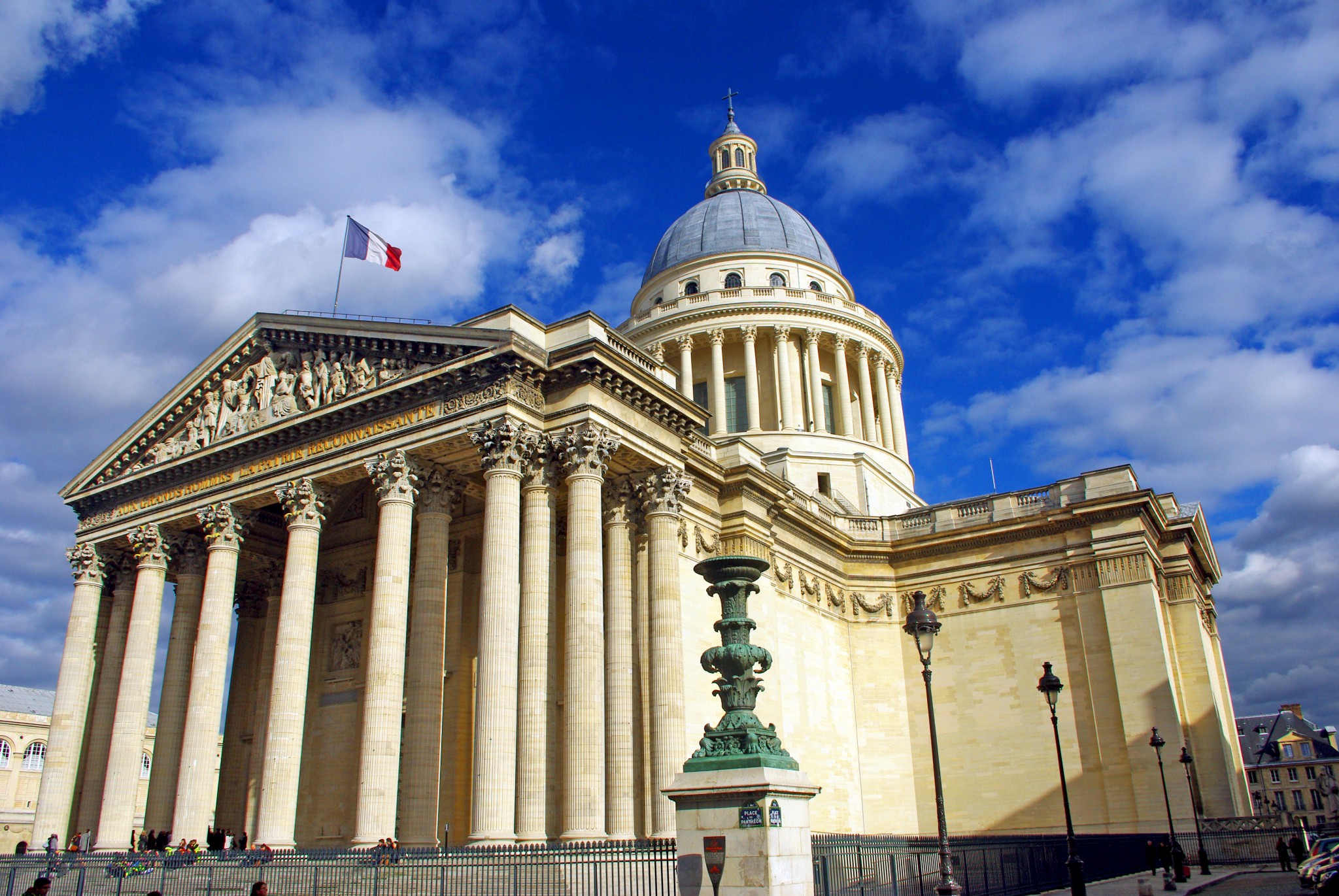
Situated in the Latin Quarter, the Panthéon stands at the top of the Sainte-Geneviève hill. A massive collonaded dome tops the neo-classical white monument.
Originally a church, the Panthéon became a necropolis for France’s most outstanding citizens and a famous national monument.
I once climbed to the dome, and it was worth it – the view from the top is breathtaking, especially in the morning sun.
Hôtel des Invalides
7th arrondissement

Here’s the grand complex of Les Invalides on the Left Bank, which I used to see daily as my workplace was nearby. The monument is easily recognisable by its magnificent golden dome, which reaches 107 metres high. Louis XIV initially built it to house the homeless and wounded veterans of the King’s army.
Today, the Hôtel des Invalides is famous for housing the tomb of French emperor Napoleon Bonaparte.
Finally, the Hôtel des Invalides also hosts three museums: the Army Museum, the Order of the Liberation Museum, and the Relief Map Museum.
- Find out more about the Hôtel des Invalides on the blog
- Discover the fantastic Relief Map museum
- Get your entrance tickets to the War Museum and the Tomb of Napoleon with Tiqets!
Sacré-Cœur of Montmartre
18th arrondissement

Visible from many parts of Paris, the Basilica of Sacré-Cœur stands like a whipped-cream church atop the hill of Montmartre. With its Romanesque-Byzantine style, the church resembles the Taj Mahal in India more than the Gothic cathedral of Notre Dame!
The Sacré-Cœur was built between 1875 and 1914 by architect Paul Abadie and houses France’s largest bell, La Savoyarde, weighing 18 tonnes.
Finally, I recommend visiting the church and the neighbouring streets of Montmartre early in the morning to avoid the masses of tourists. Make sure you also head to Place du Tertre, where you can have your portrait painted and soak up the atmosphere.
Montparnasse Tower
15th arrondissement

The Tour Montparnasse (Montparnasse Tower) is a high-rise building overlooking the district of Montparnasse in the 15th arrondissement and borders the 6th and 14th arrondissements. Its panoramic terrace offers one of the most beautiful views over Paris.
The tower was inaugurated in 1973 and was France’s tallest skyscraper until 2011 when the Tour First in La Défense was completed.
Today, the Tour Montparnasse has become a true Parisian landmark, with over 5,000 people working in the offices located in the tower.
The tower’s presence in central Paris has been controversial since its construction and criticised for being at odds with Paris’ skyline. Following its inauguration, the municipality ruled it impossible for buildings over seven floors high to be built in the centre of Paris (“intra-muros”).
At the tower’s foot are a vast shopping mall and a busy metro station connected to the Gare Montparnasse, where trains head off to the French Atlantic Coast and Spain.
- Learn more about the Montparnasse Tower on the blog
- Get your entrance tickets to the 56th floor of the Montparnasse Tower with Tiqets!
Paris City-Hall
4th arrondissement

The City Hall of Paris (Hôtel de Ville de Paris) is one of the most famous monuments in the French capital. Situated near the banks of the River Seine in the 4th arrondissement, the historic building has been the seat of the city’s council since 1977.
The first building on the site was designed in the Renaissance style from 1553 to 1628.
During the troublesome events of the Paris Commune in 1871, a fire destroyed the building except for parts of the façades.
The City Hall was entirely rebuilt between 1874 and 1882 by architects Ballu and Desperthes in a florid neo-Renaissance style. Modelled on the previous building, it also resembles the chateaux of the Loire with its steep roofs and elaborate stonework, statues and turrets.
I had the privilege to attend an event in the sumptuous halls and rooms inside; it you ever have the chance to join a tour, don’t miss it!
Opéra Garnier
9th arrondissement
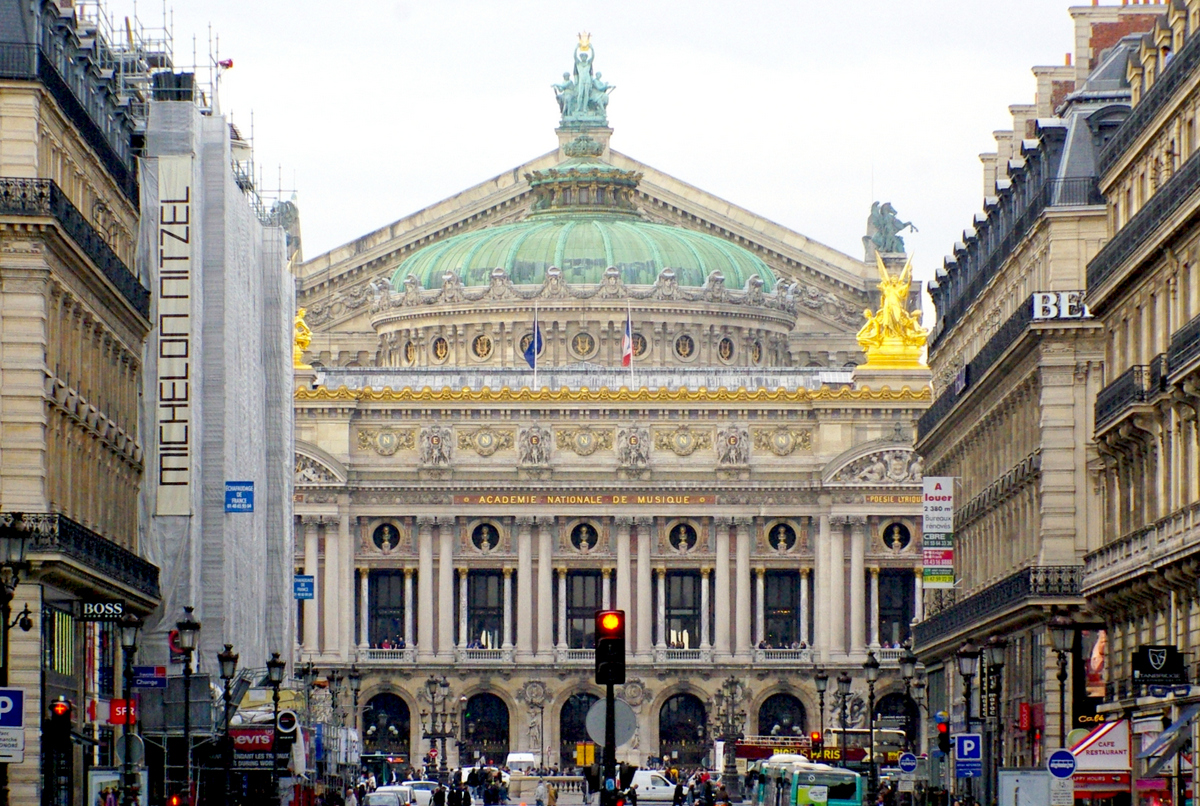
Charles Garnier built the opulent Paris Opera House from 1861 to 1875 during the reign of Napoleon III. It is part of Baron Haussmann’s great reconstruction of Paris during the Second Empire.
The building is at the end of the prestigious Avenue de l’Opéra, which comes from the Louvre.
I visited the inside of the opera, including the auditorium, which seats nearly 2,000 people and features a grand chandelier and a fine ceiling painting by Marc Chagall. I was astonished by the grand staircase.
You can pay to look around or have a guided tour at certain times of the day. It’s just mind-blowing! You can sometimes get last-minute tickets for operas and ballets, but it is best to book in advance, which you can do online.
- Find out more about Opéra Garnier on the blog
- Get your entrance tickets for a self-guided tour of Opéra Garnier with Tiqets!
Les Halles
1st arrondissement

Les Halles de Paris was the name given to the Halles Centrales, a wholesale market for fresh food products located in the heart of Paris, which gave its name to the surrounding district.
On the site of this vast market, which was held until the early 1970s, there is now:
- a green space (the Nelson-Mandela Garden),
- an underground shopping centre (Westfield Forum des Halles)
- spaces devoted to leisure (swimming pool, cinema),
- and spaces dedicated to cultural activities (conservatory, library, cultural centre).
The Châtelet – Les Halles RER station, located under the complex, is the largest underground station in the world and allows access from all over the Paris region.
The nearby Saint-Eustache church can also be considered a landmark of Paris.
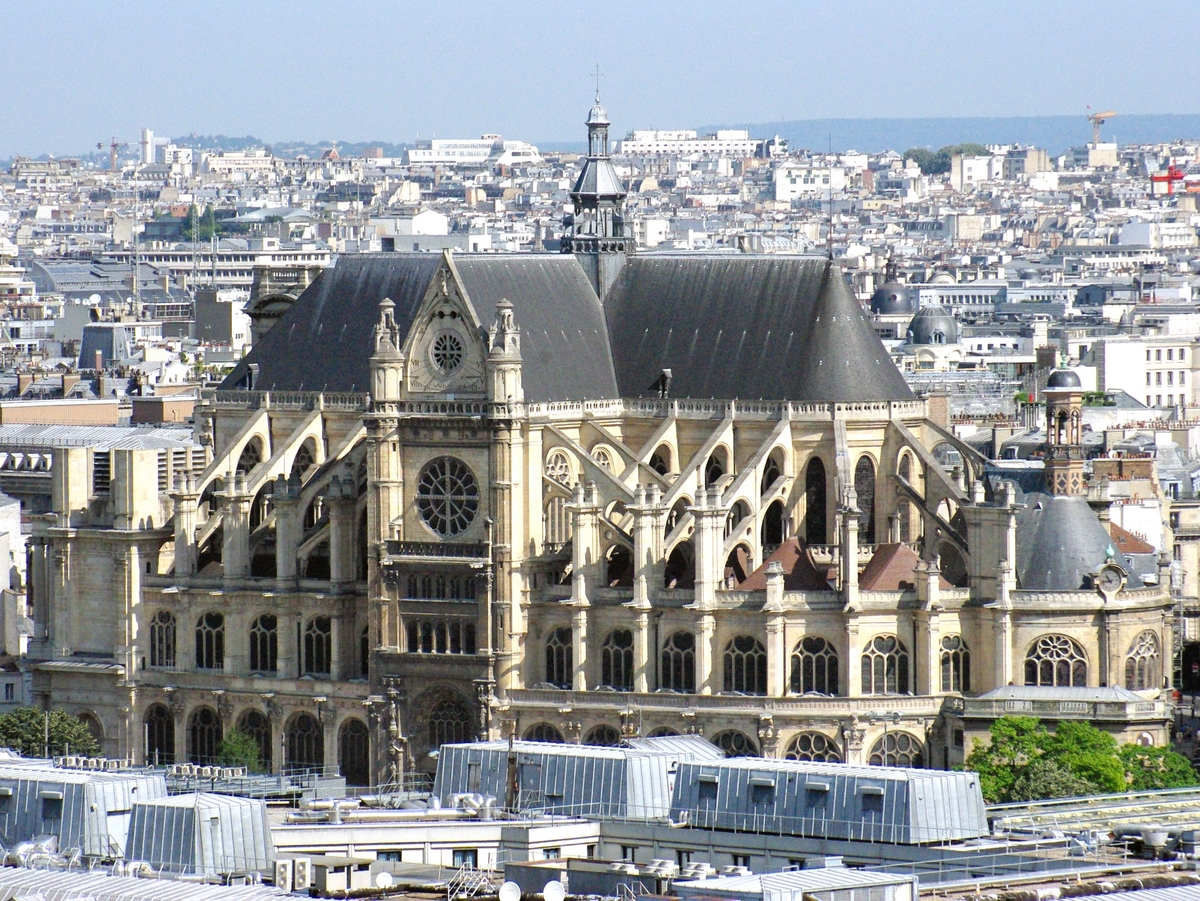
Place des Vosges
3rd and 4th arrondissements
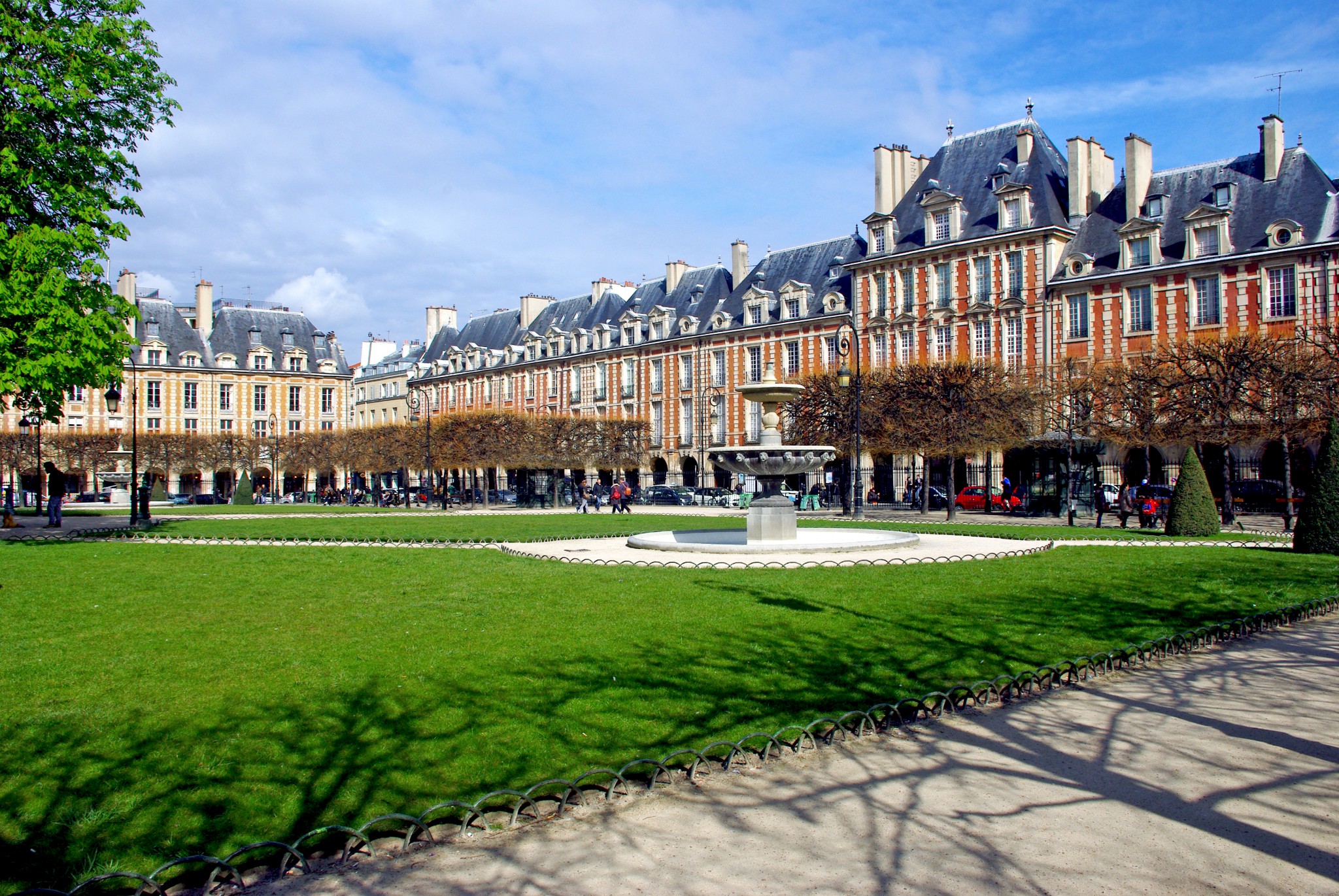
I often walked through the picturesque Place des Vosges when visiting the Marais. The square is located in the Marais district in Paris, at the junction of the 3rd and 4th arrondissements. This excellent example of Louis XIII-style architecture is the oldest planned square in Paris, and its charm comes from the regularity of the façades.
At the centre of the square, encircling the statue of Louis XIII is a grove of mature lime and chestnut trees, from which converge gravel paths, separated by four sets of flowerbeds with beautiful trickling fountains.
Place de la Concorde
8th arrondissement
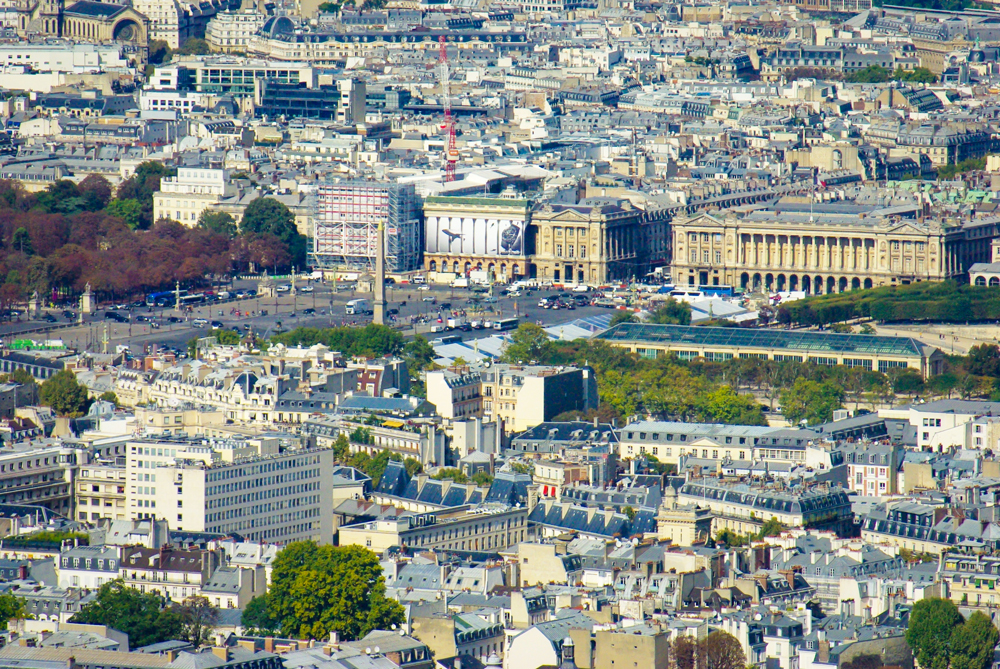
The majestic Place de la Concorde played an important part in French history. The square has often been chosen for happy or sad national gatherings.
One of the many prestigious stages of the Historical Axis, the square features a vast and elegant neo-classical ensemble from the 18th century. It connects the Tuileries Garden to the Champs-Elysées and the Madeleine to Palais Bourbon.
The square takes the form of an octagon measuring 359 by 212 metres. The River Seine borders it to the South, and classical-style buildings to the North. The Egyptian obelisk stands at the centre of the square, flanked by two massive fountains.
Some 3,500 years old, the obelisk is the oldest monument standing in Paris. It is 23 metres tall and weighs 220 tons.
Place de la Bastille
4th, 11th and 12th arrondissements
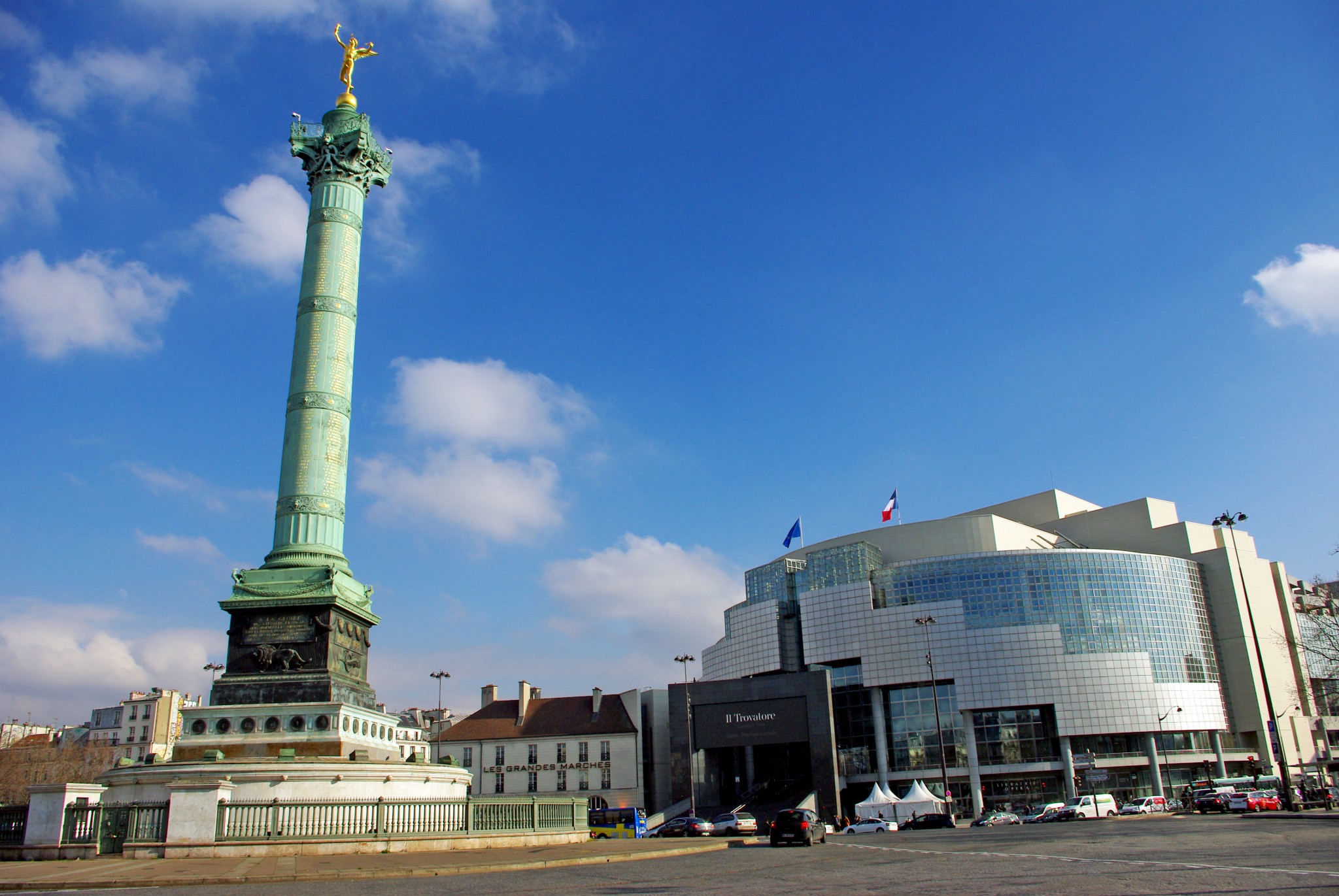
Shared with the 4th, 11th and 12th arrondissements, the Place de la Bastille is one of Paris’ most famous squares, owing its name to the historic fortress that once stood there.
The vast square (215m by 150m) was the scene of many revolutions which had significant consequences on the history of France: 1789, 1830 and 1848.
The square has changed appearance since the demolition of the Bastille prison (1789-1790) with the construction of the July Column (1840), the significant urban renovation of Baron Haussmann (mid-19th century), the demolition of the railway station (1984) and the inauguration of the modern Opéra-Bastille (1989).
The Place de la Bastille remains the French capital’s most crucial rallying point for demonstrations, marches and public celebrations.
Place de la République
3rd, 10th and 11th arrondissements
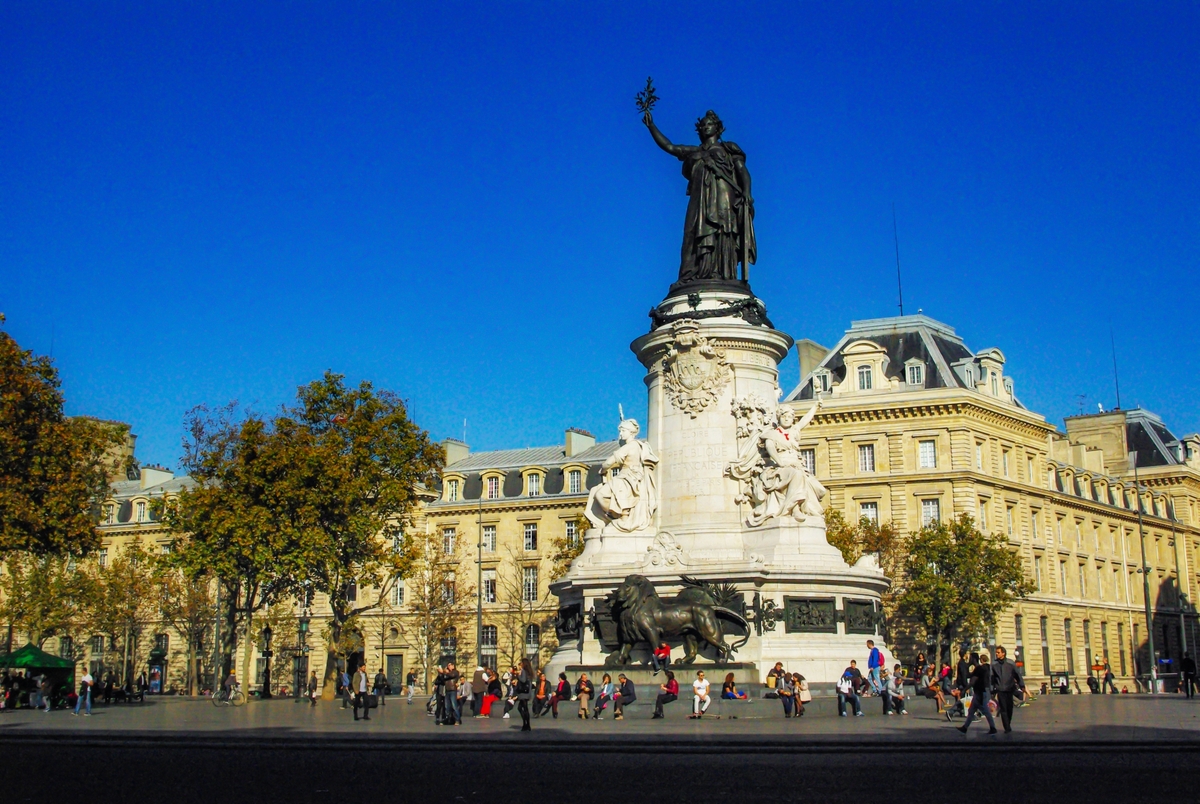
The Place de la République is a vast square at the border of Paris’s 3rd, 10th and 11th arrondissements. Seven main streets serve the square. Five lines of the Paris metro cross there, making the République station a vital interchange.
The monument in the square’s centre consists of a bronze colossal statue of Marianne in bronze, 9.50 meters high, on a stone base 15 meters high, where allegories of Liberty, Equality and Fraternity are seated.
Place de la Nation
11th and 12th arrondissements
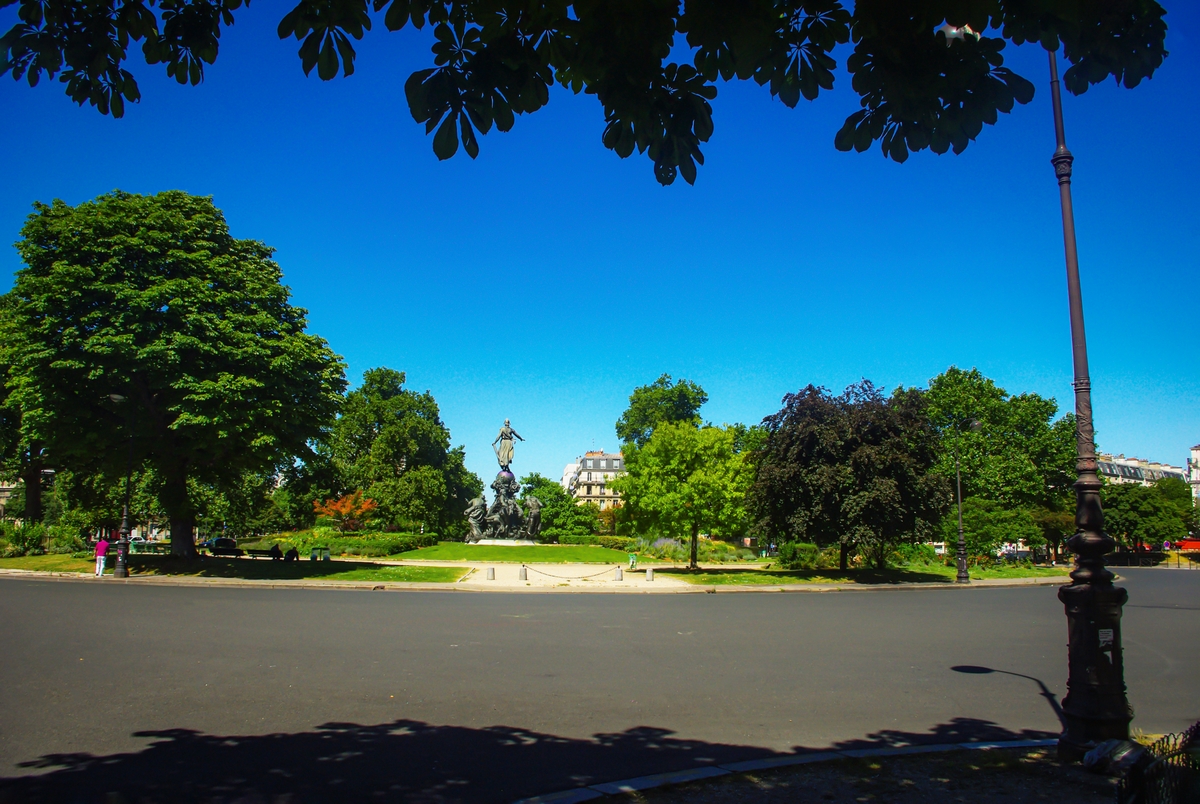
The Place de la Nation, formerly known as the “Place du Trône” and later the “Place du Trône-Renversé”, is an important Parisian square located on the border of the 11th and 12th arrondissements.
This square was so named on the national holiday of July 14, 1880, which brings the motto Liberty, Equality, Fraternity on the pediments of all French public institutions.
The Place de la Nation hosts the garden of Marianne and the sculptural group The Triumph of the Republic of the sculptor Jules Dalou in its centre.
Place d’Italie
13th arrondissement
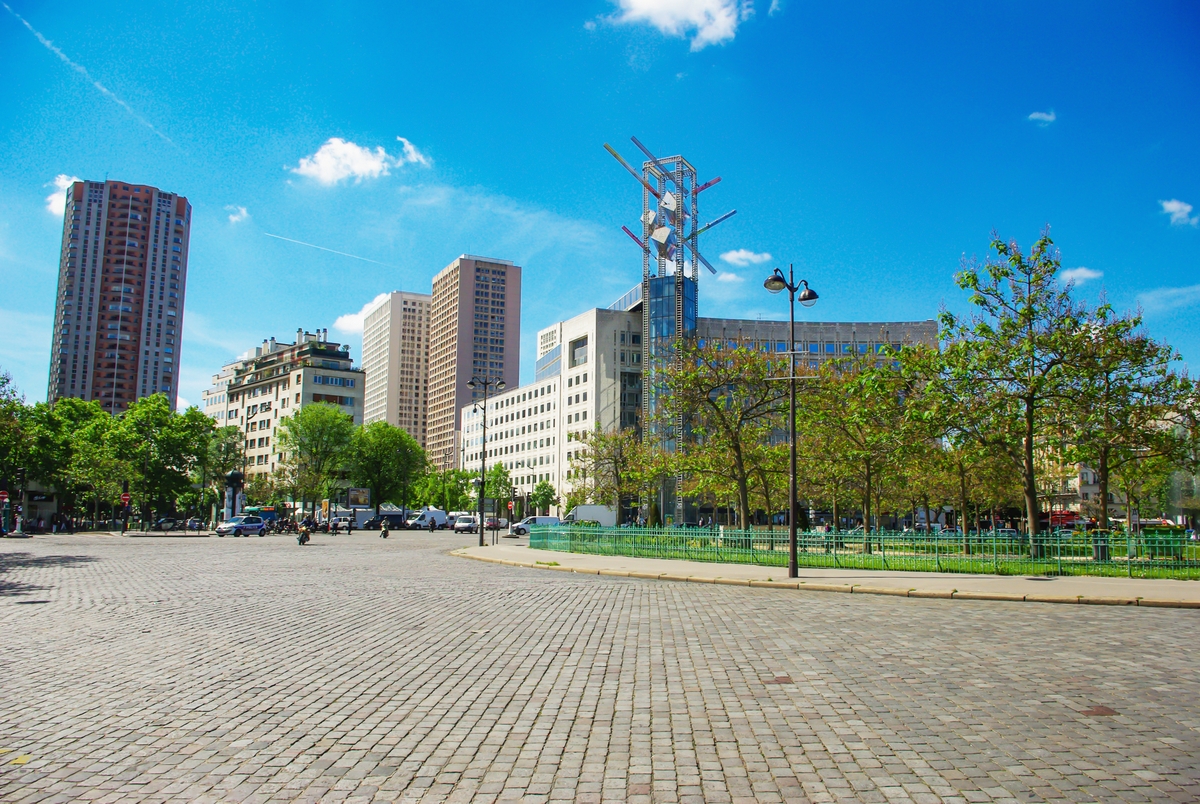
The Place d’Italie owes its name to its proximity to the Avenue d’Italie: it is the road’s starting point that connects Paris to Italy, today the N7.
In fact, the square is located at the fork in the road between the ancient Roman road linking Lutetia to Lugdunum (Lyon) and the road to Fontainebleau (Avenue d’Italie) built under François I.
The Place d’Italie is the obligatory crossing point for automobile traffic and most metro and bus lines. It is a transit place between the suburbs and the centre of Paris or between the Montparnasse district and the right bank. One of the largest shopping malls in Paris borders the square.
Porte Maillot
16th and 17th arrondissements

The Porte Maillot, located in the middle of the historical axis of Paris, is one of the accesses of Paris by the west and constitutes an interchange between the ring road, the Étoile and La Défense.
This vast square, with its six to eight traffic lanes, includes the Alexandre-Soljenitsyne garden. It is bordered to the south by the Square Alexandre-et-René-Parodi and to the north by the Palais des Congrès in the 17th arrondissement.
The tower that dominates the Palais des Congrès is that of the Hyatt Regency Paris Étoile Hotel (1974), which is 137 m high.
Palais and Jardin du Luxembourg
6th arrondissement
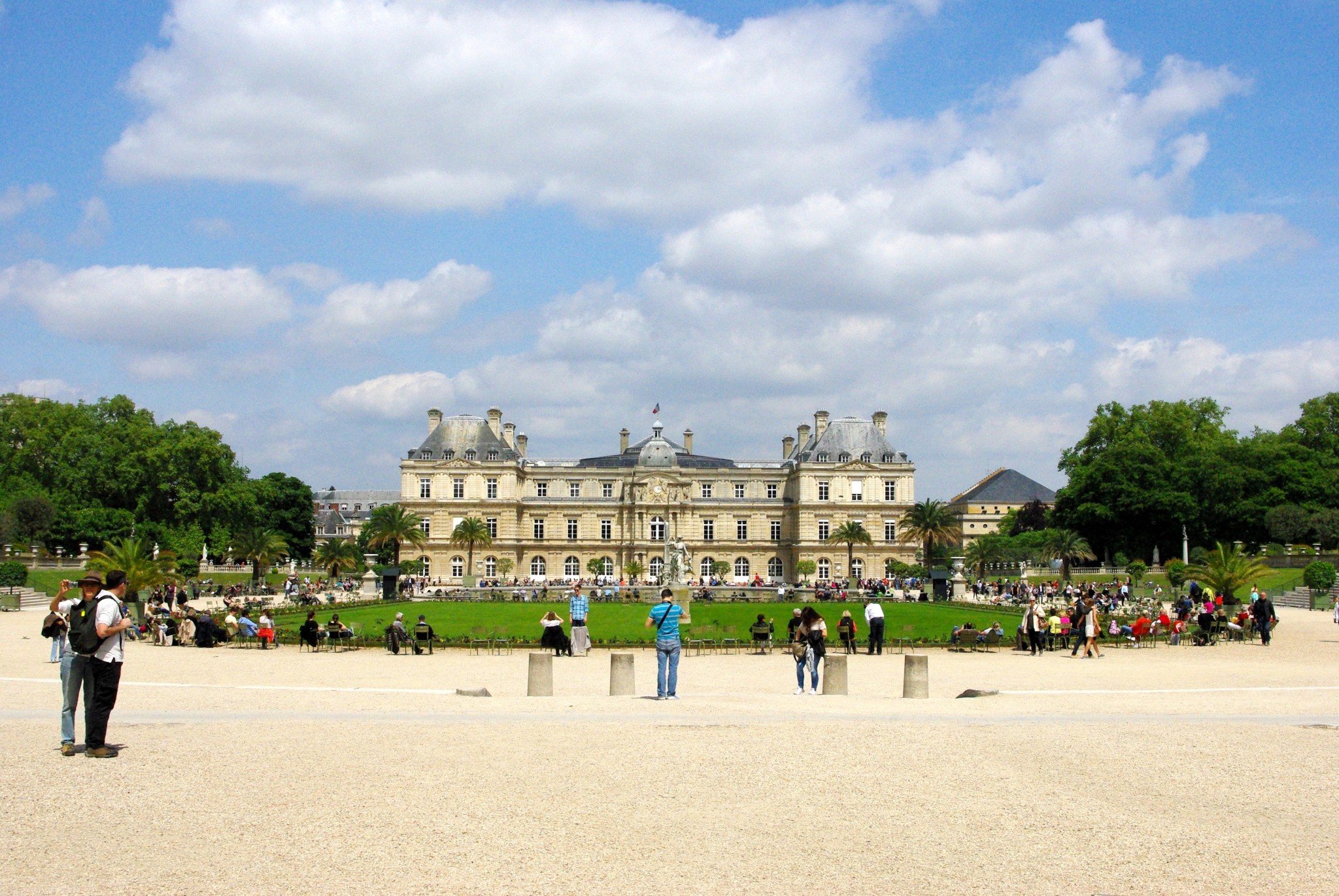
The Luxembourg Palace, surrounded by its beautiful gardens, was built in 1617. It owes its name to the Duke of Piney-Luxembourg, landlord of a domain later acquired by Maria de Medici, the widow of the King of France, Henri IV. The Italian-born Queen wished to create a residence to remind her of the Pitti Palace and establish gardens evoking those of Boboli in Florence.
Furthermore, architect Salomon de la Brosse was entrusted with the palace’s construction. It now houses the French Senate, the upper house of Parliament. The palace opens onto a beautiful park, actually one of my favourites in Paris. I love coming here in Spring and Autumn. If you have kids, it also has a brilliant play area.
- Find out more about the Jardin du Luxembourg on the blog
- Visit the official website of the French Senate.
Pont-Neuf
1st and 6th arrondissements
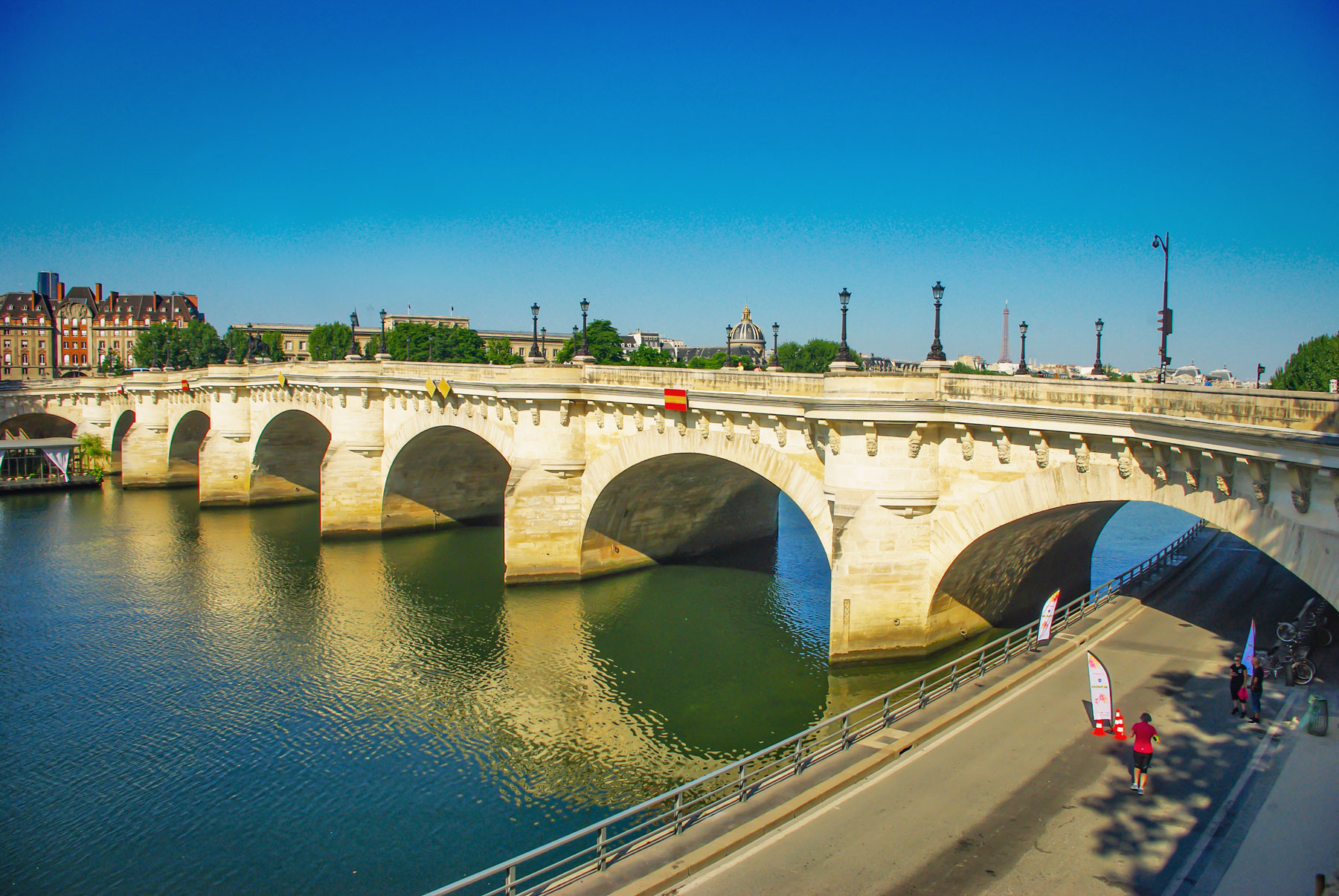
I can’t count how many times I have walked on this bridge to reach either the Left or Right Banks. Despite its name, the Pont-Neuf (New Bridge) is Paris’ oldest bridge. Spanning the Seine between the Right and Left Banks, it crosses the western tip of the Île de la Cité.
Pont-Neuf is a stone bridge built in different stages between 1578 and 1607. The construction of a new bridge was decided in 1577 by King Henri III, who laid the first stone on the 31st of May 1578.
At completion, the Pont-Neuf was the only bridge to span the whole width of the River Seine. It was the only bridge and the first causeway to feature pavements, thus protecting pedestrians from horses and mud.
The bridge has two separate spans: the span leaving the Right Bank has seven arches, and that from the Left Bank has five arches.
Pont Alexandre III
7th and 8th arrondissements
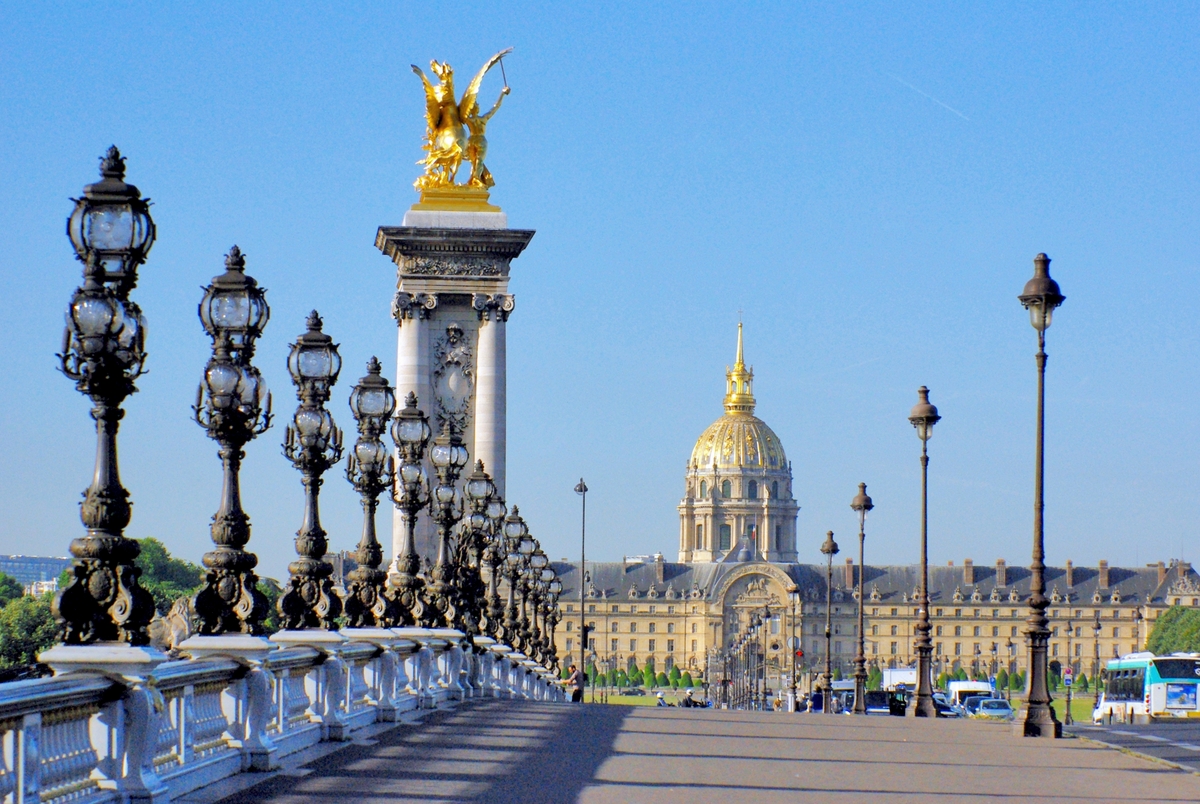
I used to work near this bridge and it was part of my daily life. Spanning the River Seine, Pont Alexandre III dates back to 1900 and is reminiscent of the Belle Epoque era.
The city’s most ornate bridge now connects the Grand and Petit Palais to the Hôtel des Invalides.
Russian emperor Nicholas II himself laid the first stone on the 7th of October 1896 in the presence of French President Félix Faure. The new bridge symbolises the Franco-Russian friendship and the alliance signed between the two nations (Tsar Alexandre III and French President Sadi Carnot) in 1891.
Technically, the bridge was an engineering success. It includes a 6m high single-span steel arch across the Seine.
Bibliothèque François Mitterrand
13th arrondissement
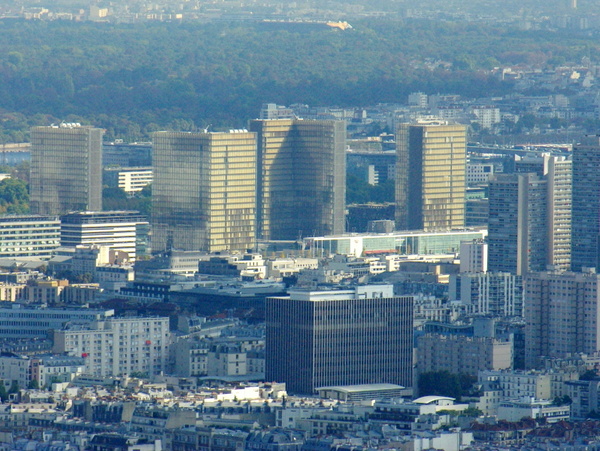
The National Library of France is the national library of the French Republic. It is also the heir to the royal collections since the Middle Ages. The institution has one of the richest collections in the world.
Its activities are spread over seven sites. The main one is the library on the François-Mitterrand or Tolbiac site on the left bank of the Seine.
In Tolbiac, the François-Mitterrand library occupies a site of 7.5 hectares for an esplanade of 60,000 m2. The building has four large angular towers of 79 m and twenty-two floors, each symbolically representing four open books. Each tower has a name: of the Times, the Laws, Numbers, and Letters.
In the centre of the building is a garden of 9,000 m2 (50 × 180 m), which evokes a medieval cloister.
La Défense
Outside of Paris

Teaching French to businessmen and women, I have often had to enter the towers of La Défense. I was lucky enough to discover this futuristic district from a different perspective than a casual passer-by.
Geographically speaking, the district of La Défense is located outside the limits of the City of Paris. But for many, it is part of the French capital because of its economic and tourist influence.
Indeed, La Défense is Europe’s largest purpose-built business district. The district showcases France’s great leap into the 21st century. For many visitors to France who come to Paris with a preset image in their mind, the Business District is somewhat unexpected. In fact, its actual value lies in its position at the far end of the Historical Axis.
The gigantic and stunning Grande Arche is 110 metres tall by 112 metres deep. Interestingly, it could hold Notre Dame Cathedral within its arch. The magisterial modern triumphal arch is undeniably a successful project, blending perfectly with the surroundings thanks to its contemporary outline of white marble. Alongside the Eiffel Tower, it is probably one of the most imposing landmarks of Paris.
- Find out more about the district of La Défense on the blog
- Discover the Grande Arche de la Défense
- Get your entrance tickets to the Grande Arche Observatory Desk with Tiqets!
The River Seine
1st, 4th, 5th, 6th, 7th, 8th, 12th, 13th, 15th and 16th arrondissements

The Seine has always played a historic part in the making of Paris.
The waters of the River Seine have always been the heart and soul of Paris. This was already the case when the Parisii tribe first established a fishing village along its banks more than 2,000 years ago.
The river is maybe the greatest of all the landmarks of Paris. It will guide you towards the many districts of central Paris: the Ile de la Cité, the Eiffel Tower or the Bercy neighbourhood…
- Find out more about the banks of the River Seine on the blog
- Get your tickets to a sightseeing cruise on the Seine with Tiqets!
Want to explore more of Paris?
Check out my two photographic eBooks:
123 UNEXPECTED CURIOSITIES IN PARIS
The landmarks of Paris by arrondissements
As mentioned above, the French capital contains dozens, if not hundreds, of landmarks. To avoid making a long list of Paris landmarks, I have selected the most important ones by arrondissement.
However, mentioning that this list of sites only gives a small overview of Parisian landmarks is helpful. Indeed, depending on the place of residence of a Parisian (or a visitor), some sites will not constitute a landmark for him or her.
For example, if you live in the 8th arrondissement, the Arc de Triomphe or the Parc Monceau will be the landmarks you are used to. On the other hand, the Place d’Italie in the 13th arrondissement will not affect you, especially if you never set foot there! The landmarks of Paris are therefore appreciated on a personal basis and in a neighbourhood context.
Landmarks of the 1st Arrondissement
- The Louvre – the former palace of the kings of France. The iconic glass pyramid serves as the main entrance to the famous museum.
- Palais-Royal – a former royal palace opposite the Louvre.
- Place Vendôme – a classical square with the Vendôme column at its centre.
- Les Halles – the site of the former central marketplace of Paris. It now houses the Westfield Forum des Halles, a modern shopping mall. The nearby Saint-Eustache church is a landmark often linked to Les Halles.
- Place du Châtelet – a busy public square and métro station that connects to the Ile de la Cité via the Pont au Change.
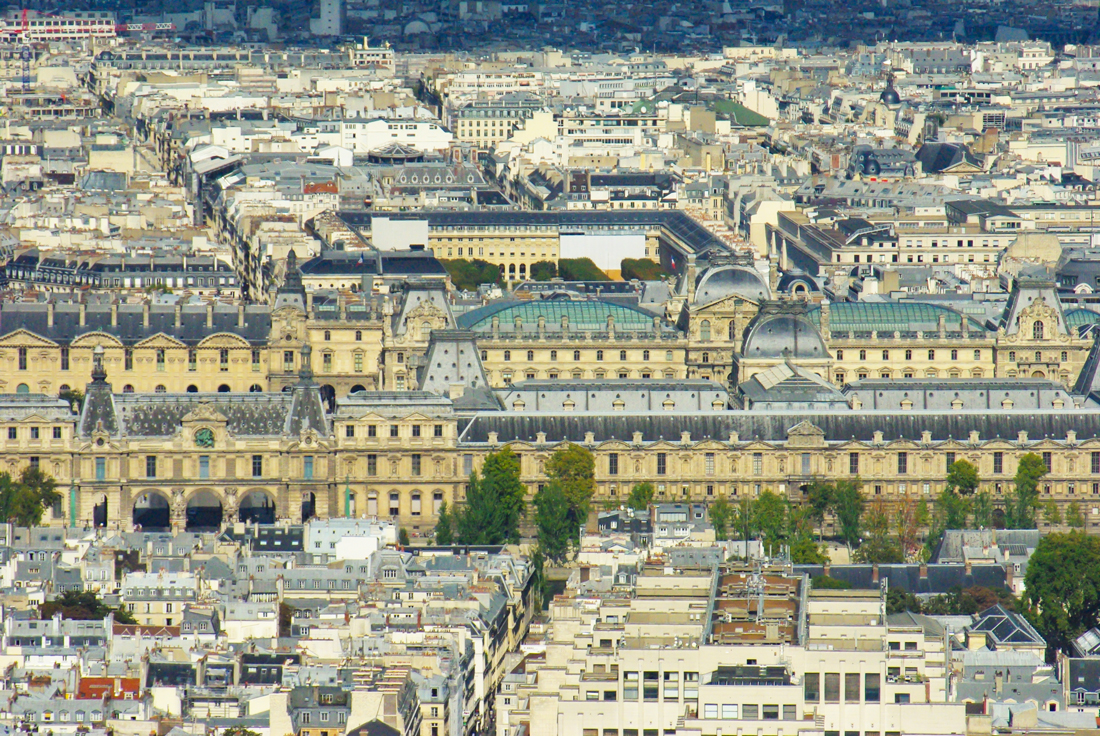
Find out more about the 1st arrondissement of Paris on the blog…
Landmarks of the 2nd Arrondissement
- Palais Brongniart – the former stock exchange of Paris.
- Place des Victoires – a circular square at the confluence of six streets.
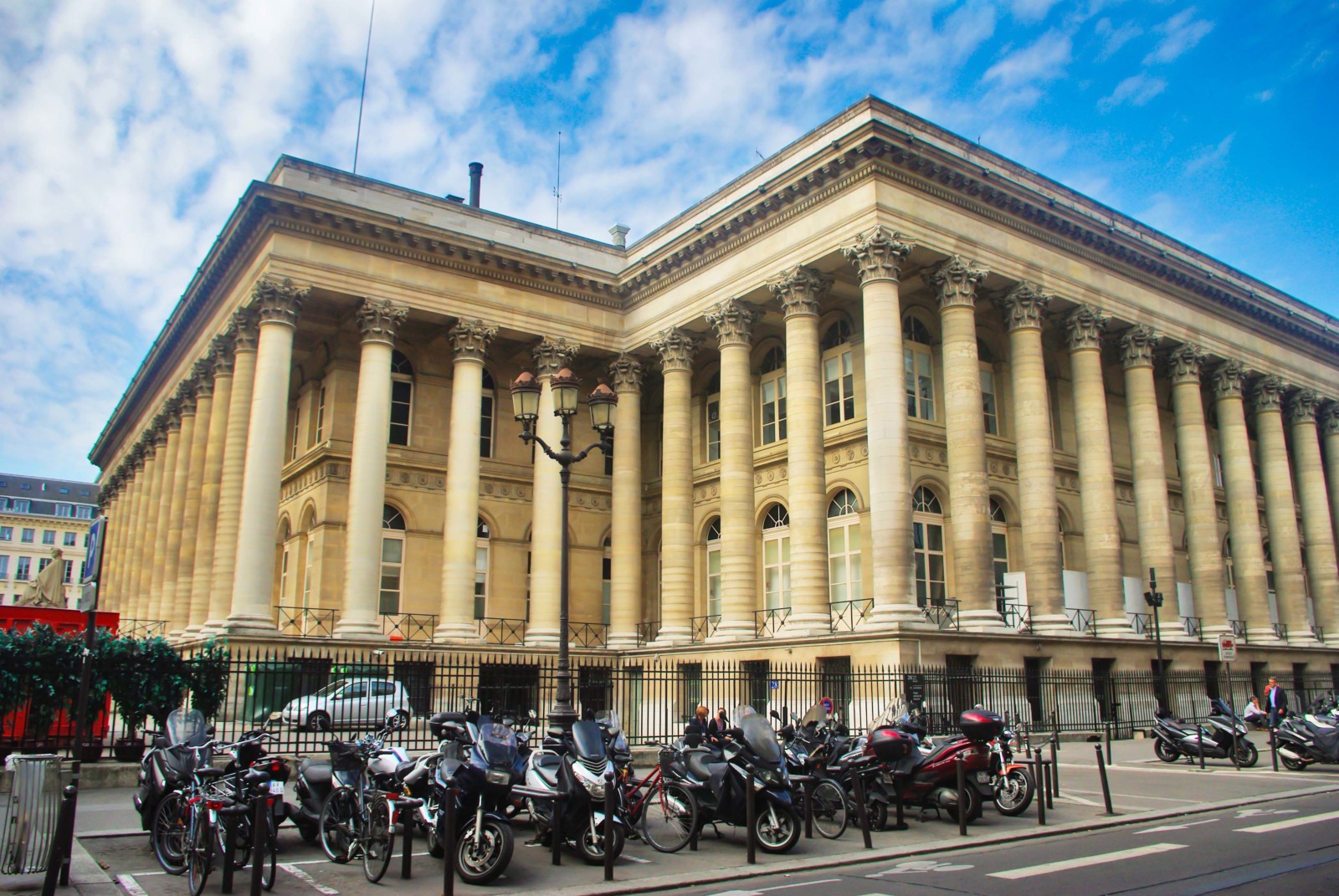
Find out more about the 2nd arrondissement of Paris on the blog…
Landmarks of the 3rd Arrondissement
- Saint-Nicolas-des-Champs – a Flamboyant Gothic-style church from the 12th, 15th and 17th centuries.
- Conservatoire national des arts et métiers – The former buildings of the Saint-Martin-des-Champs Priory now house the industrial design museum of Arts et Métiers.
- Square du Temple – the public garden is bordered by the town hall of the 3rd arrondissement, not far from the Carreau du Temple.
- Place de la République – one of Paris’ largest and busiest squares at the border with the 10th and 11th arrondissements.
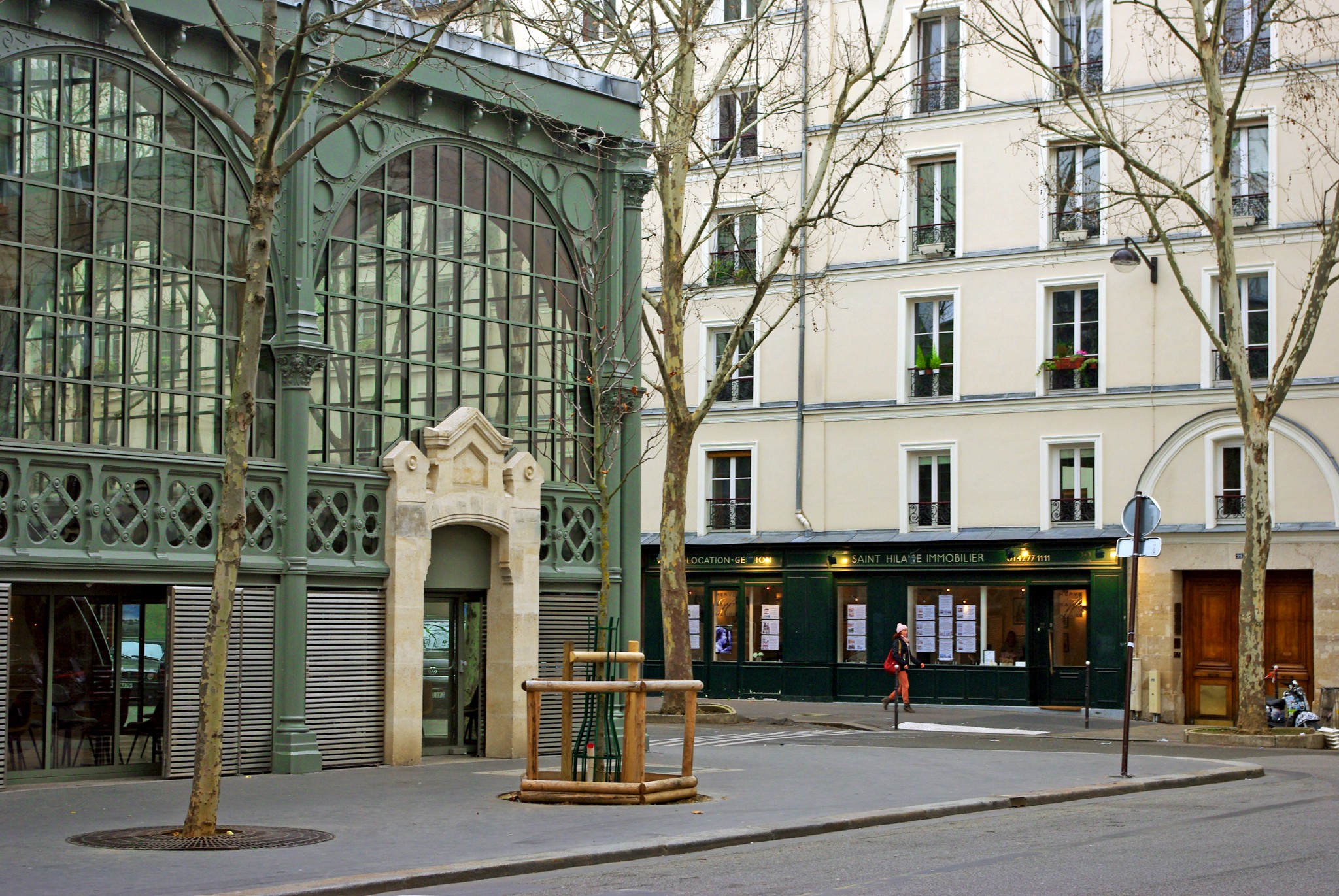
Find out more about the 3rd arrondissement of Paris on the blog…
Landmarks of the 4th Arrondissement
- Notre Dame Cathedral – the most famous church in Paris also marks the point from which distances by road to other cities in France are measured.
- Pompidou Centre – a complex building in the Beaubourg area which houses a vast public library, the largest museum for modern art in Europe, and a music and acoustic research centre.
- Tour Saint-Jacques – the bell tower of the former church of Saint-Jacques-de-la-Boucherie stands as a Gothic beacon in the centre of Paris.
- Paris City Hall – the Renaissance-style building has been the headquarters of the municipality of Paris since 1357.
- Place des Vosges – one of Paris’ first created public squares (completion: 1605).
- Saint-Paul-Saint-Louis – King Louis XIII ordered the construction of this stunning classical church (1627 to 1641) on rue Saint-Antoine.
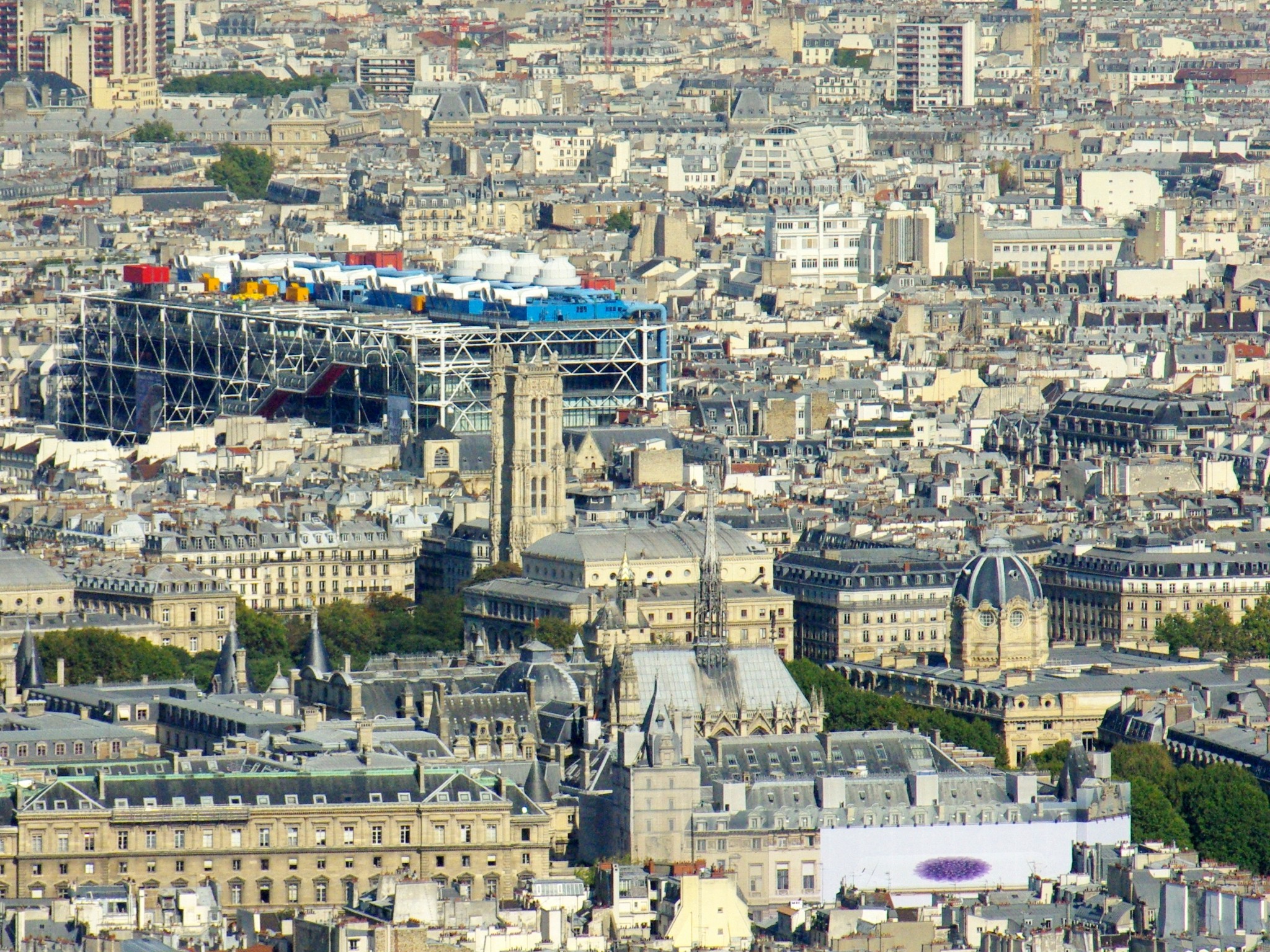
Find out more about the 4th arrondissement of Paris on the blog…
Landmarks of the 5th Arrondissement
- Panthéon – the monument is the tallest of the 5th arrondissement and is visible from far away as it was built at the summit of the Sainte-Geneviève Hill.
- Place Monge – a public square not far from the iconic Rue Mouffetard.
- Place Jussieu – the square borders the University of Paris VI and VII, where the Jussieu tower stands.
- Jardin des Plantes and the Grande Gallerie de l’Evolution
- Val de Grâce – a former military hospital with a remarkable neo-classical church.

Find out more about the 5th arrondissement of Paris on the blog…
Landmarks of the 6th Arrondissement
- Square and Church of Saint-Germain-des-Prés – one of Paris’ oldest churches.
- Square and Church of Saint-Sulpice – one of Paris’ largest churches.
- Palais du Luxembourg – the Seat of the Senate and its beautiful public garden: Jardin du Luxembourg.
- Institut de France – the building from the 17th century houses a French-learned society. It gathers five académies, including the prestigious Académie Française.
- Place Saint-Michel – a busy public square in the Latin Quarter, shared by the fifth and sixth arrondissements.
- Pont Neuf – Paris’ oldest standing bridge connects the Left to the Right Banks via the western tip of the Ile de la Cité.
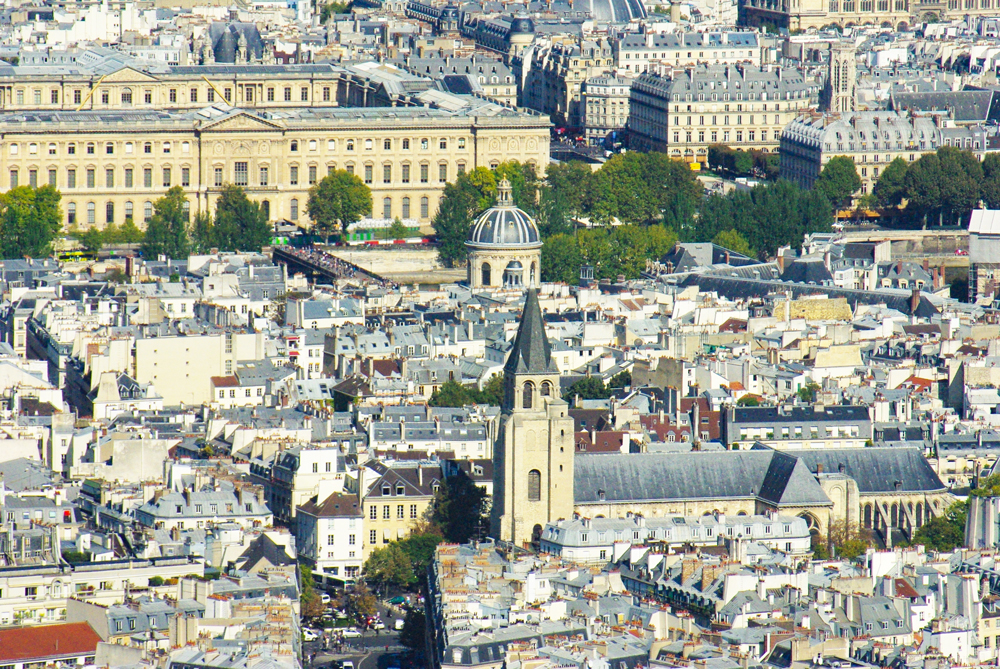
Find out more about the 6th arrondissement of Paris on the blog…
Landmarks of the 7th Arrondissement
- The Eiffel Tower – Paris’ tallest monument.
- Musée d’Orsay – a former railway station converted into a vast museum.
- Bon Marché – Paris’ oldest department store.
- Sainte-Clotilde Basilica – a neo-Gothic church easily recognisable with its twin spires.
- Hôtel des Invalides – it was Louis XIV (the Sun King) who commissioned this complex of buildings as a retirement home for war veterans. Today, it contains museums relating to the military history of France, as well as the resting place of Napoleon in the Dome church.
- Palais Bourbon – an 18th-century building that is the seat of the French National Assembly.
- Ecole Militaire – at the southeast end of the Champ de Mars, the Ecole Militaire, founded by Louis XV in 1750, houses various military training facilities.

Find out more about the 7th arrondissement of Paris on the blog…
Landmarks of the 8th Arrondissement
- Arc de Triomphe – the famous triumphal arch of Paris sits atop a hill and is the centre stage from which 12 avenues radiate. One of the most famous landmarks of Paris!
- Avenue des Champs-Elysées – the celebrated wide street links the Arc de Triomphe to the Place de la Concorde, along the Historical Axis of Paris.
- Place de la Concorde – this is the largest square in the French capital. Its centre features the Obélisque, a giant and authentic Egyptian obelisk exalting the reign of the pharaoh Ramesses II.
- Grand and Petit Palais – these are two large historic sites, exhibition halls and museums at the Champs-Élysées.
- Pont Alexandre III – arguably Paris’ most beautiful bridge, which connects the district of the Champs-Elysées to the Invalides.
- Sainte-Marie-Madeleine – the classical style of the Madeleine church echoes that of the Palais Bourbon across the Seine.
- Gare Saint-Lazare – one of Paris’ busiest railway stations.
- Saint-Augustin – The church dates back to Haussmann’s urban works of Paris and provides a prominent vista at the end of the Boulevard Malesherbes. Its dome rises to a height of 61 m.
- Parc Monceau – The English-style park covers an area of 8.2 hectares (20.3 acres).

Find out more about the 8th arrondissement of Paris on the blog…
Landmarks of the 9th Arrondissement
- Opéra Garnier – the Paris Opera House, designed by Charles Garnier, provides a prominent vista at the end of the Avenue de l’Opéra.
- Grands-Magasins – two emblematic department stores border the north side of the Boulevard Haussmann: Printemps and Galerie Lafayette.
- Sainte-Trinité – a neo-Renaissance church from the Second Empire period, inaugurated in 1867.

Find out more about the 9th arrondissement of Paris on the blog…
Landmarks of the 10th Arrondissement
- Porte Saint Denis and Porte Saint-Martin – two triumphal arches from the period of Louis XIV.
- Canal Saint-Martin – a picturesque waterway with iron footbridges.
- Gare du Nord and Gare de l’Est – these major Parisian railway stations are located close to each other.
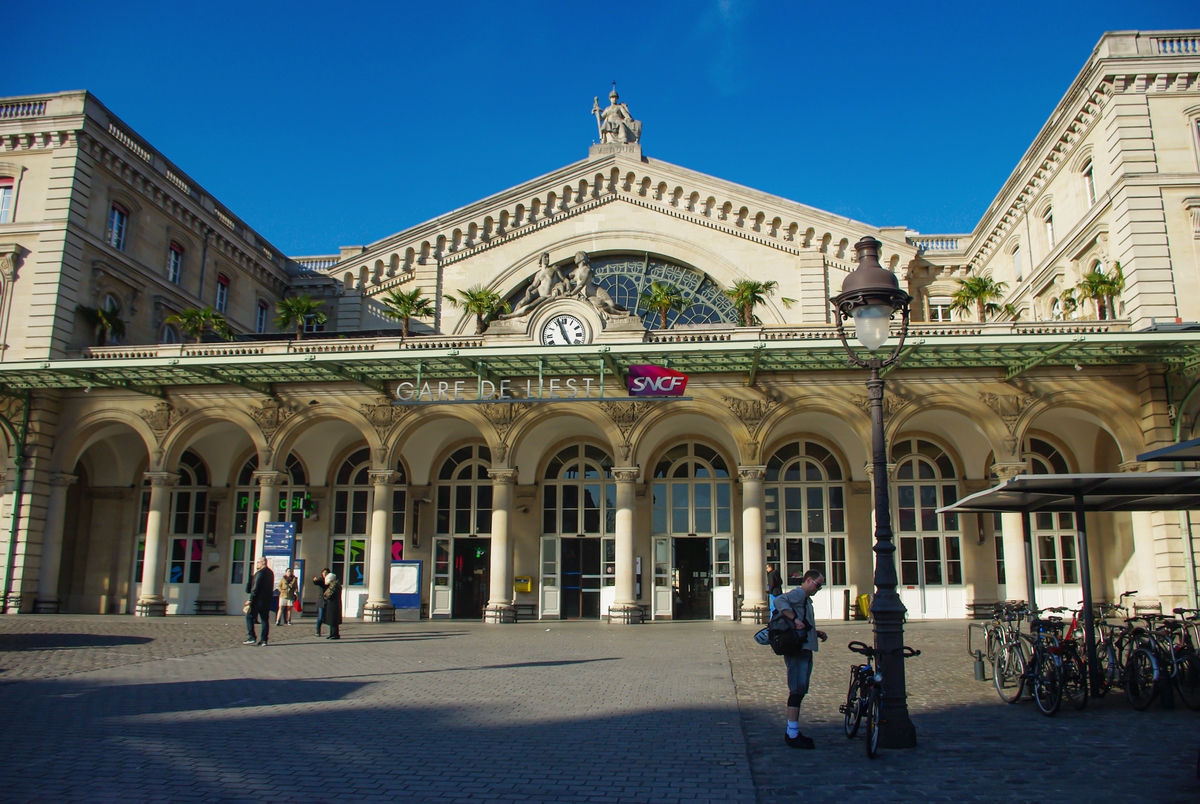
Find out more about the 10th arrondissement of Paris on the blog…
Landmarks of the 11th Arrondissement
- Cirque d’Hiver – opened in 1852. The building is a prominent venue for circuses, musical concerts, and other events, such as fashion shows.
- Place Léon Blum – the public square is crossed by the Boulevard Voltaire. This is where the town hall of the 11th arrondissement stands.
- Saint-Joseph-des-nations – a church from the 19th century.
- Saint-Ambroise – a church inaugurated in 1868 which features two twin bell towers.

Find out more about the 11th arrondissement of Paris on the blog…
Landmarks of the 12th Arrondissement
- Gare de Lyon – the railway station is famous for its clock tower.
- Place de la Bastille – this is where the infamous fortress of the Bastille once stood. Today the Opéra Bastille borders its east side.
- Accor Arena (or palais omnisports de Paris-Bercy) – an indoor sports arena and concert hall (1984).
- Place de la Nation – one of Paris’ largest public squares on the borderline with the 11th arrondissement.
- Place Félix Eboué – the public square crosses Avenue Daumesnil and Boulevard de Reuilly. In its centre is a monumental fountain, the Fontaine des Lions.
- Le Grand Rocher – in the Bois de Vincennes, the ‘grand rocher’ (great rock) is an artificial mountain in the Paris Zoo.
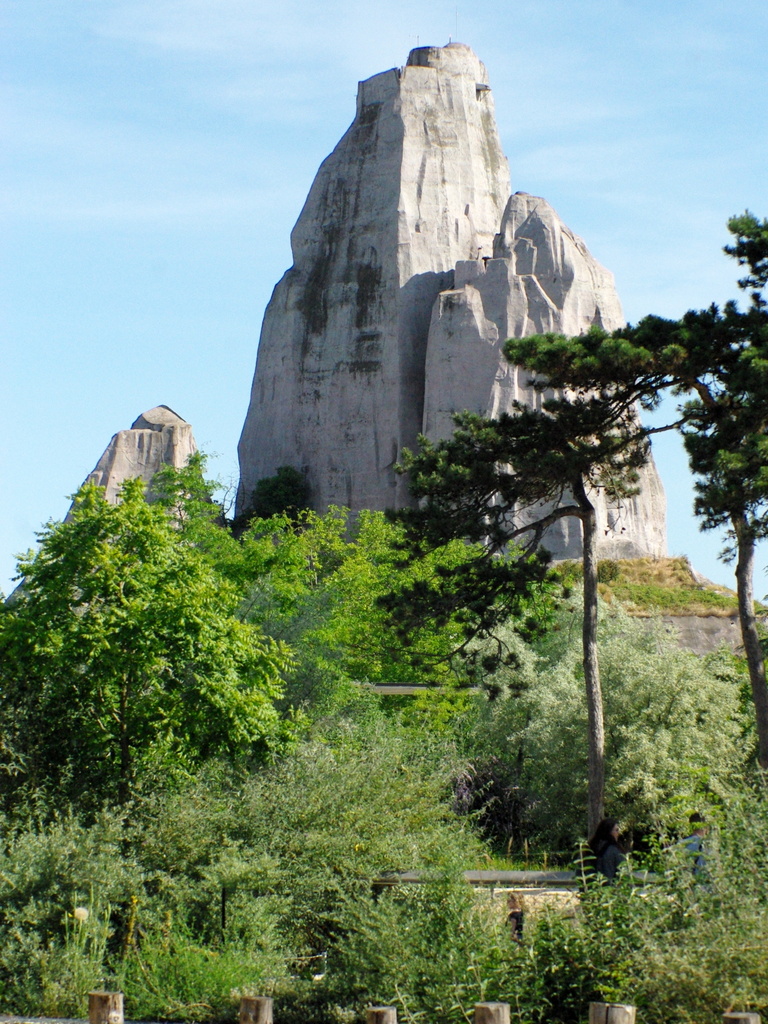
Find out more about the 12th arrondissement of Paris on the blog…
Landmarks of the 13th Arrondissement
- Gare d’Austerlitz – the railway station that connects the French capital to the central regions of France (Orléans, Clermont-Ferrand and Toulouse).
- Place d’Italie – a circular public square on the road that links Paris and Italy. The district to the south of the square consists of high-rise blocks: Italie 13.
- Bibliothèque Nationale de France – the national library of France and its open book-shapes towers.
- Tours Duo – the skyscrapers (completion end of 2021, 180 m and 122 m tall) are among the most recent landmarks of Paris.

Find out more about the 13th arrondissement of Paris on the blog…
Landmarks of the 14th Arrondissement
- Place Denfert-Rochereau – a public square that features the statue of the Lion of Belfort by Bartholdi.
- Paris Observatory – founded in 1667, one of the largest astronomical centres in the world.
- Saint-Pierre de Montrouge – the church (mid-19th century) occupies a triangular site bounded by the Avenue du Maine and the Avenue du général-Leclerc.
- Parc de Montsouris – the public garden is close to the Cité Internationale Universitaire.

Find out more about the 14th arrondissement of Paris on the blog…
Landmarks of the 15th Arrondissement
- Montparnasse Tower – the skyscraper is the second tallest of the landmarks of Paris (210 m) and overlooks the district of Montparnasse.
- Square Saint-Lambert – a public garden not far from the shopping street of rue Lecourbe.
- Front de Seine – a high-rise complex that includes about 20 towers reaching nearly 100 m in height.
- Parc André Citroën – a public park opened in 1992 on the former site of the Citroën automobile manufacturing plant. It features the tourist attraction of Ballon Generali, which climbs 150 m (490 ft) above Paris.
- Parc Georges Brassens – a public park opened in 1984 on the former site of a fish market, a horse market and a slaughterhouse.
- Palais des Sports (Porte de Versailles) – an indoor arena (1959) situated on the busy square of the Place de la Porte de Versailles.
![Tour Montparnasse Terrace © Benedicte Jezequel67 - licence [CC BY-SA 4.0] from Wikimedia Commons](https://frenchmoments.eu/wp-content/uploads/2013/07/Tour-Montparnasse-Terrace-©-Benedicte-Jezequel67-licence-CC-BY-SA-4.0-from-Wikimedia-Commons.jpg)
Landmarks of the 16th Arrondissement
- Palais de Chaillot and Place du Trocadéro – the two separate wings of the building that form a broad arc face the Eiffel Tower.
- Place d’Iéna – at the intersection of avenues d’Iéna and President Wilson.
- Maison de la Radio – the headquarters of Radio France (1963) take the shape of enormous ring 500 meters in circumference with a central utility tower.
- Place de l’église d’Auteuil – the church of Auteuil was built in the Romanesque-Byzantine style (2nd half of the 19th century).
- Parc des Princes – an all-seater football stadium from 1972.

Find out more about the 16th arrondissement of Paris on the blog…
Landmarks of the 17th Arrondissement
- Porte Maillot and Hyatt Regency Paris Étoile – a major road interchange dominated by the high-rise building of the Hyatt Regency Paris Étoile. This rooftop of the hotel rises to 137 m).
- Place des Ternes – a public square in the heart of the Ternes district.
- Place du Maréchal Juin – the square is at the intersection of Avenue de Villiers, Avenue Niel, Avenue Gourgaud, Rue de Courcelles and Boulevard Pereire.
- Tribunal Judiciaire de Paris – the Judicial Court of Paris is the most significant court in France by caseload. Opened in 2020, the skyscraper (160 m tall) is among the most recent landmarks of Paris.
- Place du Général Catroux – this rectangular square is crossed by the Boulevard Malesherbes and the Avenue de Villiers. The square is home to several statues, including the Monument to Alexandre Dumas Fils by the sculptor René de Saint-Marceaux (1906).

Find out more about the 17th arrondissement of Paris on the blog…
Landmarks of the 18th Arrondissement
- Sacré-Cœur Basilica – the Romanesque-Byzantine church (end of 19th century) is one of the most recognisable landmarks of Paris, dominating the rooftops of the Hill of Montmartre.
- Place des Abbesses – a busy public square in the heart of the shopping precinct of Montmartre (rue des Abbesses, rue Lepic…). Its métro entrance is one of the last Art Nouveau edifices of the kind.
- Moulin Rouge – arguably Paris’ most famous cabaret. You can recognise it by its red mill.
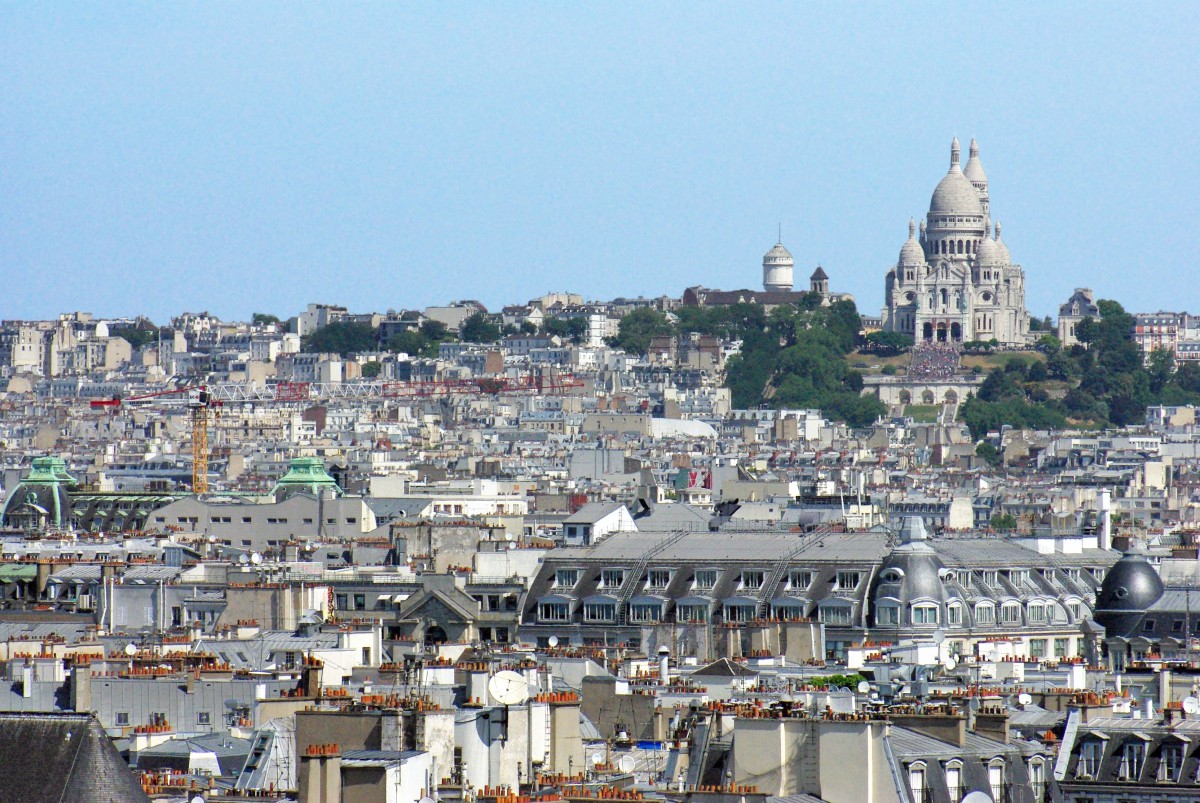
Find out more about the 18th arrondissement of Paris on the blog…
Landmarks of the 19th Arrondissement
- Rotonde de la Villette – one of the octroi gates of the Fermiers généraux wall built just before the Revolution.
- Parc des Buttes Chaumont – one of the largest green spaces in Paris inaugurated in 1867.
- Place des Fêtes – a pedestrian square lined with high-rise residential buildings.
- Parc de la Villette – established on the site of the slaughterhouses of La Villette, it was inaugurated in 1987. The park covers 55 hectares, making it the largest green space in Paris.
- Les Orgues de Flandres – a group of residential buildings in the Villette district visible from many vantage points in Paris.

Find out more about the 19th arrondissement of Paris on the blog…
Landmarks of the 20th Arrondissement
- Notre-Dame de la Croix de Ménilmontant. It is one of the largest churches in Paris (the fourth largest).
- Cimetière du Père Lachaise. The world’s most famous cemetery! This is the resting place of many French and foreign personalities.
- Place Gambetta. The public square planted with trees forms a crossroads with Avenue Gambetta, Rue des Pyrénées, Rue Belgrand and Avenue du Père-Lachaise.
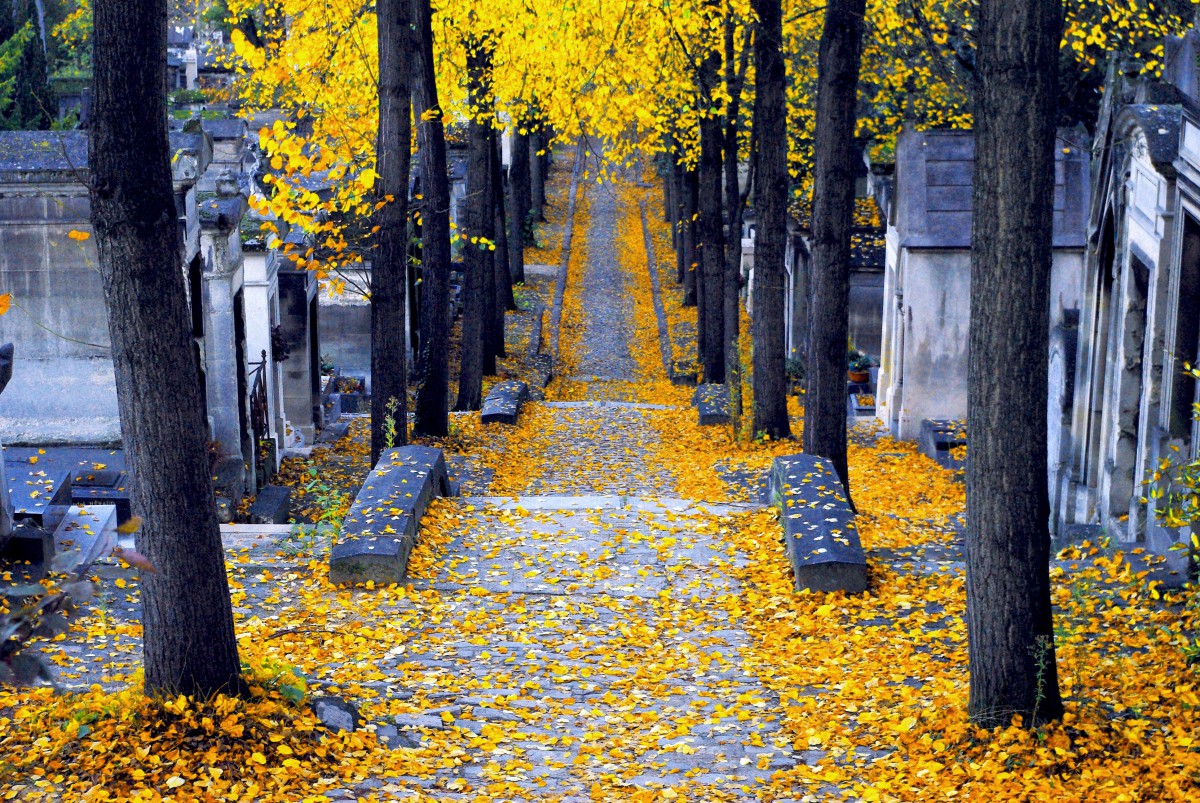
Find out more about the 20th arrondissement of Paris on the blog…
Where to stay when visiting Paris?
On your way to explore the landmarks of Paris? There’s a vast choice of accommodations in Paris! From basic hotels to luxury palaces and comfy holiday rental apartments. Check it out by clicking on this affiliate link or navigate through the following map to give you an idea:
Pin it on Pinterest!
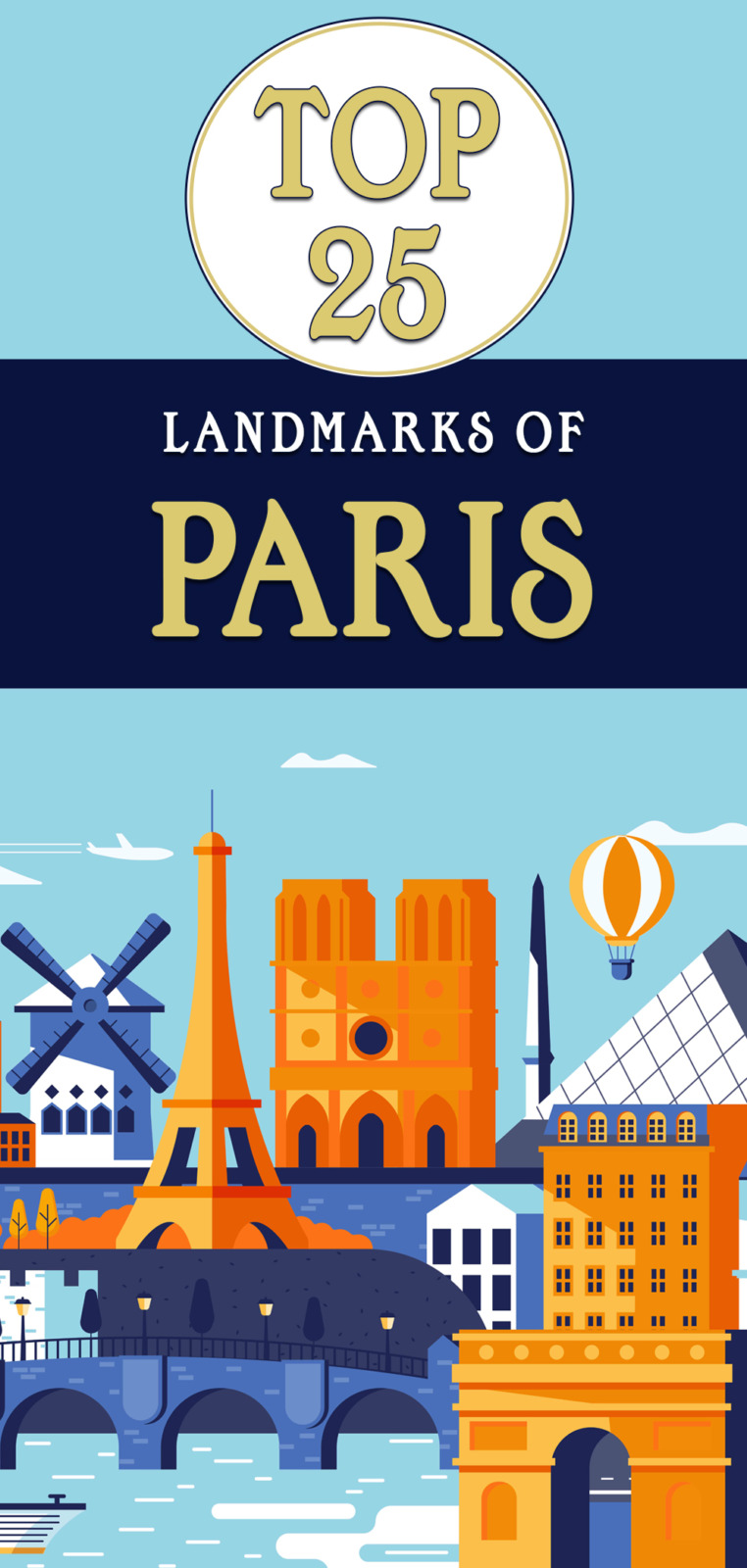




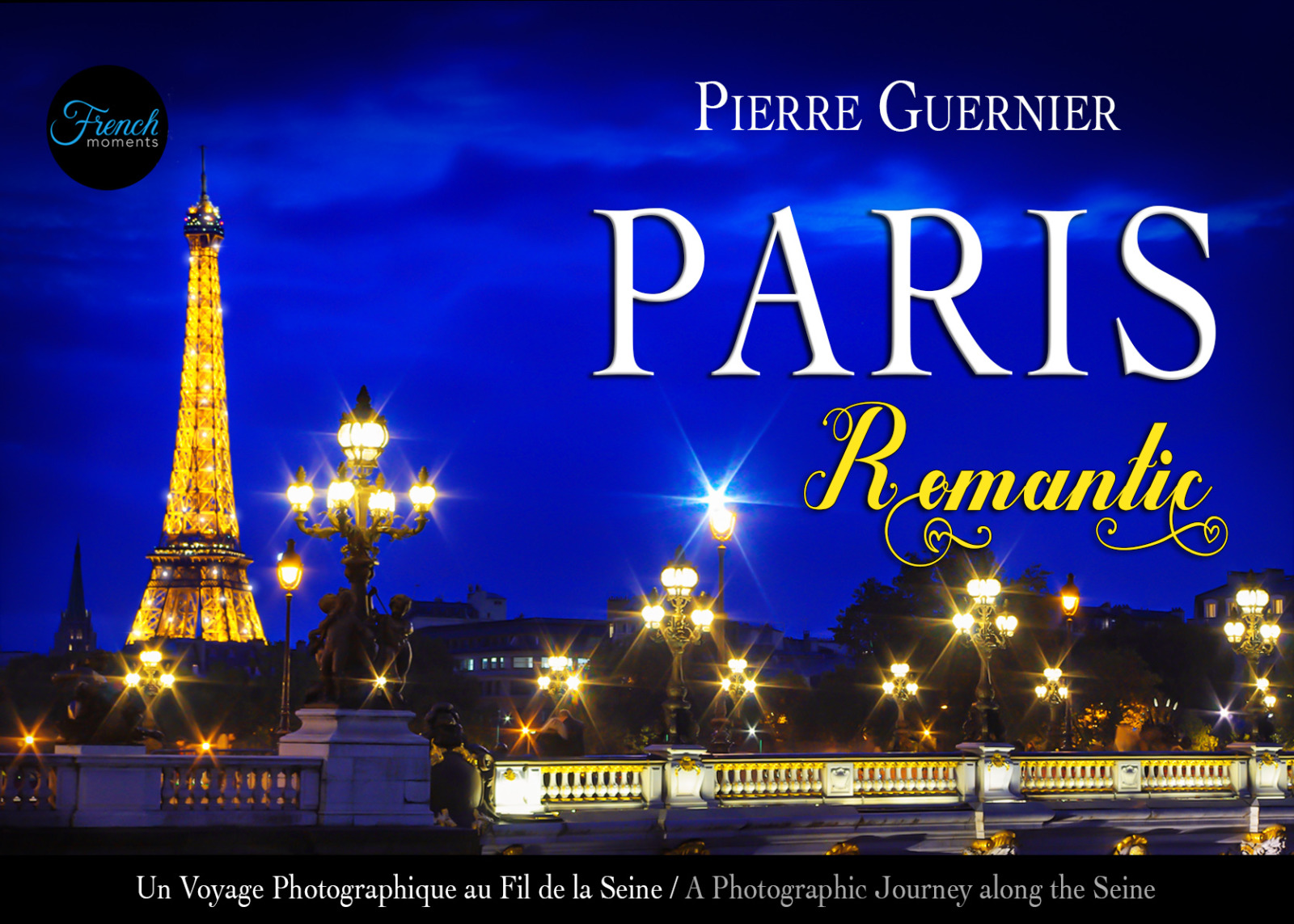


Bookmarking (as I do all your articles). So many more things to see in Paris which is just another reason to return!
You’re welcome, merci beaucoup Ellen! 👋
I love the landmarks and have visited most of them. When in Paris I love to stay in the 5th Arrondissement, just across from the Pantheon, near family. My favorites are rue Mouffetard, Luxembourg Gardens and St. Sulpice. It's also a quick walk to Notre Dame.
Thank you, John. Rue Mouffetard is indeed a lively street, particularly during market days! 🙂
The department stores are free and so much fun. First, the renovated Samaritaine. Not to be missed. BHV has a rooftop bar. Galleries Lafayette has a free balcony, gorgeous dome, and ultra de luxe wares. The old wall surrounding Paris is now part of a basketball court. Nearby is the Hotel de Sens. On the right bank there is an outdoor garden. And people dance there all the time. Hotel de la Marine is amazing. Right next to the Crillon.
Thank you for your comment and these great locations!
22/25!
Also bookmarking for the great information in this article (as usual)!
Wow, impressive score! 3 more to go! 🙂
Even though Paris is not my favourite city to visit, I have stayed three times, due to leaving from Paris to fly home (Brisbane). I do love the adventure wandering the city, especially the gardens (Parc Monceau was a highlight). The train stations fascinate me, sitting and watching the goings-on. Have been to 18 on the list of 25. We were first in line for our Eiffel tower visit; attended a service in Notre-Dame de Paris; visited the top of Montparnasse tower (the view is amazing); stayed around the corner from Place des Vosges; stayed opposite Luxembourg gardens (so we could relax there after a big day of walking); visited the roof of La Defense (well worth the trip) on our way out to Saint Germain-en-Laye; plus walking through most of the covered passages, which was definitely a highlight.
You did great to see all this marvels of Paris! Hope you enjoyed visiting Saint-Germain-en-Laye, we used to live near this town 🙂